
AN EDUCATIONAL MAGAZINE FOR WAAQIFAAT-E-NAU
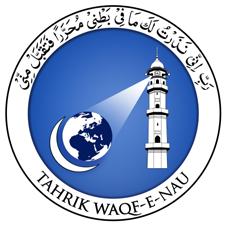
ISSUE 49 | JAN - MAR 2024
“...LET THE WHOLE WORLD KNOW THAT SOONER OR LATER -SOONER RATHER THAN LATER - PALESTiNE WiLL REVERT TO MUSLiM POSSESSiON. THiS iS A DiViNE DECREE AND NOBODY CAN ALTER GOD’S DECREE.”
[From
the English Translation of the Commentary of Surah Al-Anbiyan, V.106, by Hazrat Khalifatul Masih II ra (Five Volume Commentary, Vol. 4, p.2124)]
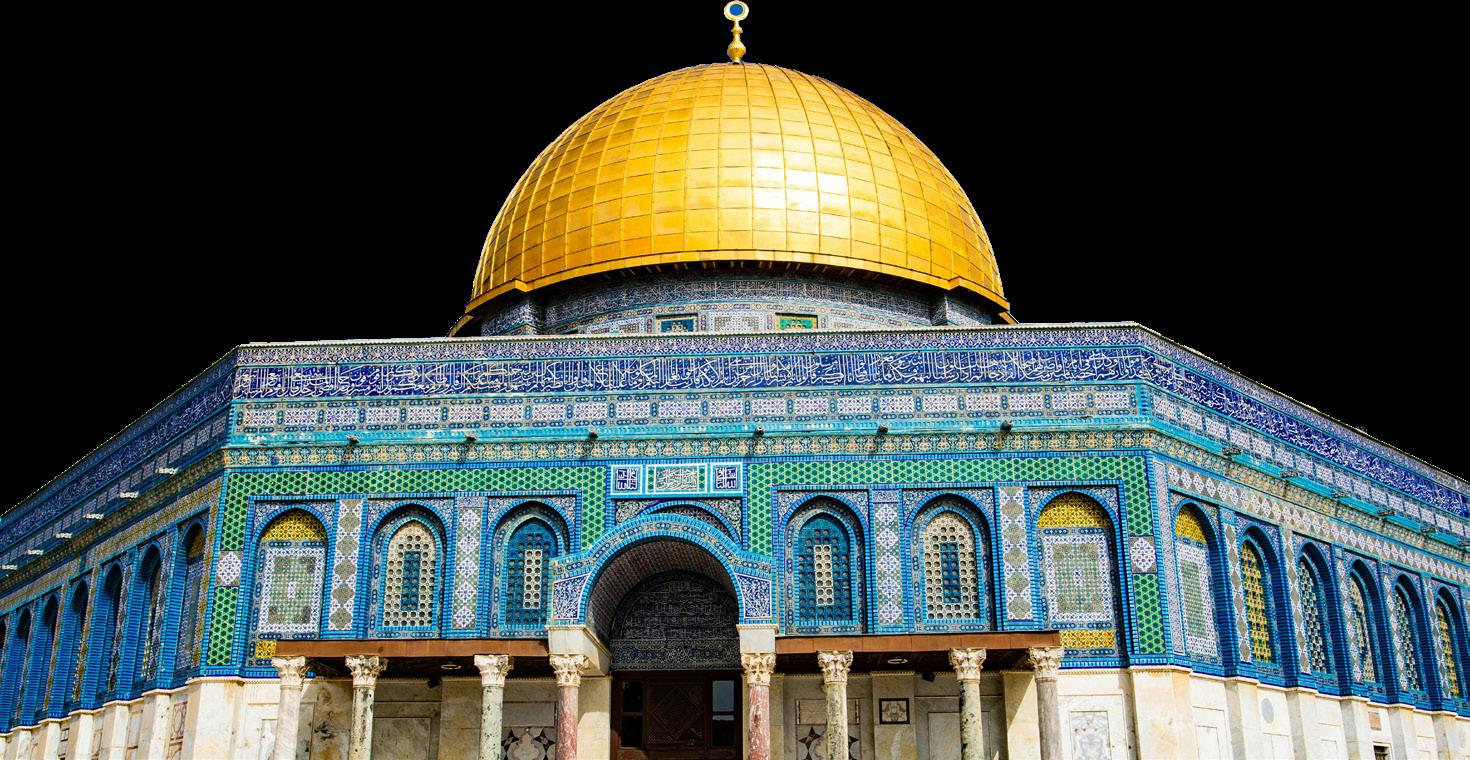
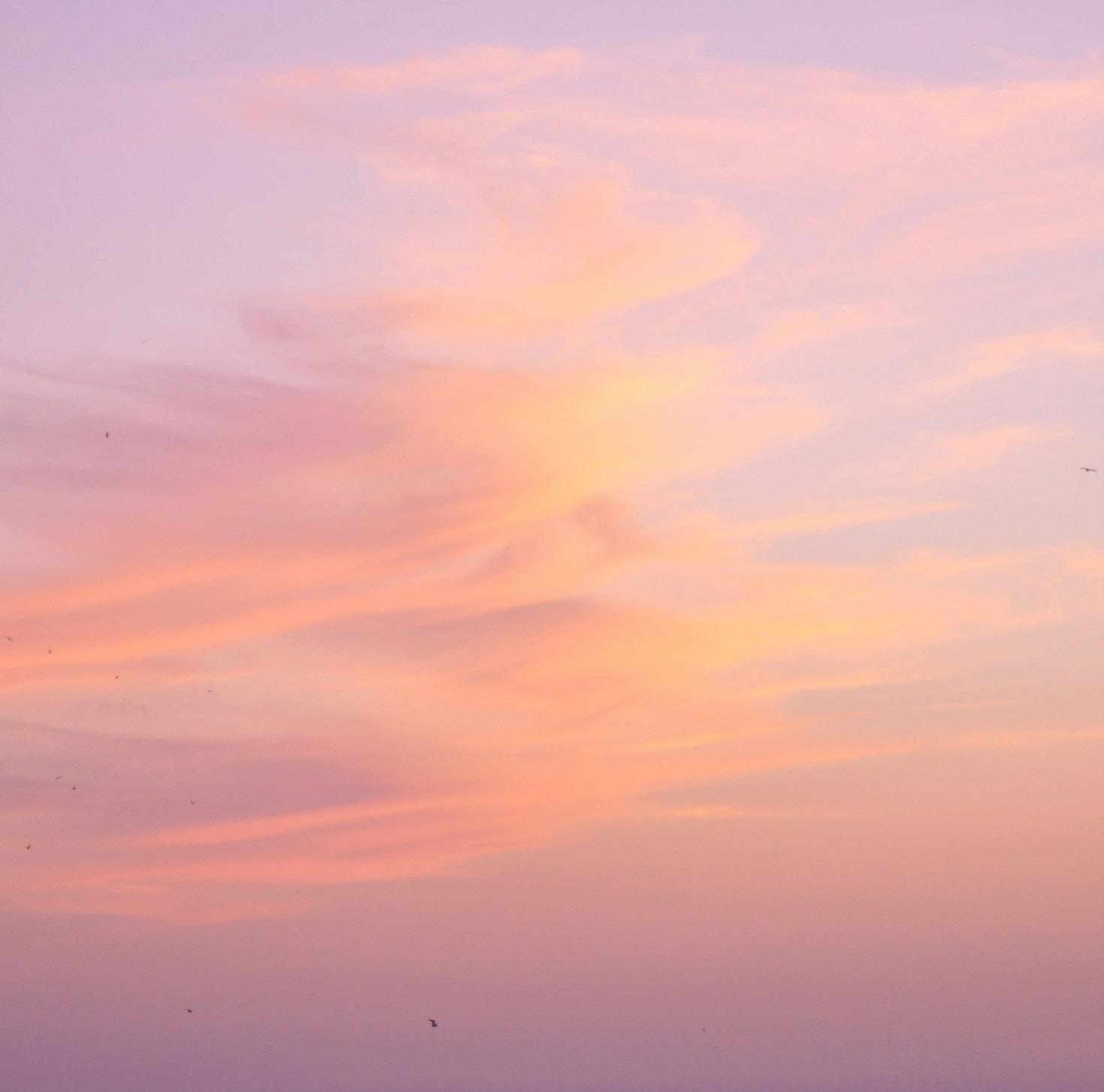
Historical context of tHe Palestineisrael conflict
A deep dive into confict between Palestine and Israel over the years
tHe
Promised land
Insight into the Question and Answers on the Qur’anic History of Bani Isra’il
involving your cHildren in tHe sPirit of ramadan Advice on how to instil the importance of Ramadan in children

Ahmadi Mothers
MUST MANIFEST THE HIGHEST STANDARDS OF WORSHIP OF ALLAH
“With the grace of Allah, the Waqf-e-Nau scheme has reached a stage where many of the early waqifaat-enau girls are now mothers. Indeed, even many of those born some years later are now married and starting their families. The responsibilities of such waqifaat-e-nau are much increased. Where before they had to concentrate primarily on their own moral state, now they are also directly responsible for the training of the next generation of the Jamaat. To fulfil this duty, Ahmadi mothers must manifest the highest standards of worship of Allah and inculcate within themselves the very best morals.
“Most of you have been brought up and educated here and so you understand this society and recognise its ills and vices. Utilise this knowledge to not only save yourselves from its ill effects but also to guide your children so that they avoid the moral pitfalls and traps that await them as they grow and develop.
“Without a shadow of a doubt, it is a great challenge of the time for Ahmadi mothers to ensure that our future generations remain attached to their religion. Moreover, be ever mindful of your duty to bring people towards God.”
“Every waqifa-e-nau must start with their own home. Treat your younger siblings and children with love and care and strive to nurture a love of Allah within their hearts. Thereafter, reach out to your neighbours, friends and the wider world. Never waver in your efforts to develop a righteous society in which the teachings of Allah the Almighty reign supreme. Be ready for every sacrifice for the sake of your faith and take inspiration from those noble women from the past who attained the highest spiritual ranks.”
(Address by Hazrat Mirza Masroor Ahmad, Khalifatul Masih V (May Allah be his helper) at the National Waaqifaate-Nau Ijtema UK 2023)
from the editor
Currently the world is witnessing unimaginable cruelty being inflicted upon innocent lives, whilst major world powers look on. As Ahmadi Muslims we are fortunate that our beloved Khalifa, Hazrat Mirza Masroor AhmadMay Allah be his helper, guides us during these difficult times. In light of the current situation, Hazooraba has stressed the importance of prayers.
In his Friday Sermon on 16th February 2024 Hazooraba said: “…A great deal of prayers are required to save humanity from destruction. If Ahmadis truly pray, then they will be able to play their role in this regard. The Israeli government is set in its ways and they find some excuse or another to present at every instance and they are not prepared to accept any reason or rationality. The other powerful governments in the world start by saying that there should be a ceasefire, but then either of their own will or out of fear of Israel, respond to anything said by the Israeli government or its leader by agreeing with them. May Allah have mercy on them and turn them towards God Almighty. This is the only way these people can take refuge and protect their lives in this world and the next. May Allah the Almighty have mercy on them, enable us to pray, and have mercy on us as well.”
May Allah enable all of us to follow the guidance of our beloved Hazooraba and accept our heart-felt prayers to end the suffering of innocent lives and bring peace to the world. Ameen.
In this issue of Maryam Magazine our readers can enjoy articles including ‘The Historical context of the Palestine-Israel conflict’, ‘The Promised Land –Questions and Answers’, ‘The Righteous Shall Inherit the Land’ and ‘Involving your children in the spirit of Ramadan’.
Hina Ahmedi
ENGLISH EDITOR
Do you have any comments, suggestions or want your article featured in our next edition?
Email us at: chiefeditor@maryammagazine.org
CHIEF EDITOR
Zanubia Ahmad
ASSISTANT CHIEF EDITORS
Dure Jamal Mala
Nayla Muzamil
ENGLISH EDITOR
Hina Ahmedi
ENGLISH SUB-EDITOR
Hamooda Arif
EDITORIAL BOARD
Sabah Un Noor Tahir
Hibba-Tul Mussawir
Maleeha Mansur
Meliha Hayat
Salma Manahil Malik
Tahmeena Shamim Tahir
Mashel Chaudhry
Samina Yasmeen Arif
Amatul Wakeel Maha
Sameera Mirza
Kashifa Qamar
Safina Nabeel Maham
COVER DESIGN
Soumbal Qureshi
PAGE DESIGN & SETTING
Soumbal Qureshi
Naeema Amjad
Atiyya Wasee
Naila Fowad
Hina Farooqi
Zara Tahir Ahmad
Printed Under The Central Office Waqf-E-Nau
MANAGER
Luqman Ahmad Kishwar
PRINTERS
Raqeem
1 | Maryam
Press, Tilford meet the team

03. The Holy Qur’an
04. Hadith
05. Writings of the Promised Messiahas
07. Essence of Fasting | Hazrat Mirza Ghulam Ahmadas
08. The Life and Character of the Seal of Prophetssaw
12. Historical Context of the Palestine-Israel Conflict | Hibbat Mirza
26. Poem: For Humanity’s Sake | Sabahat Khalil
28. Involving Your Children in the Spirit of Ramadan | Saima Snobar Ahmad
33. A Blessed Month | Hazrat Mirza Bashir-Ud-Din Mahmud Ahmadra
34. Kids’ Spread
39. ‘Muslims Must Become United’ | Hazrat Mirza Masroor Ahmad, Khalifatul Masih Vaba
40. The Promised Land: Questions & Answers
45. Poem: A Voice for Peace | Sabeeka Maqbool Rana
46. ‘The Righteous Shall Inherit the Land’ | Hazrat Mirza Masroor Ahmad, Khalifatul Masih Vaba
49. Changing Faces of Palestine | Shaista Giny
contents JAN - MAR 2024 | ISSUE 49
دیمج نارق
The Holy Qur’an
ريدقل مهرصن ىلع
الل نإو
عفد لّولو اللانبر اولوقي نأ
اوملظ مهنأب نولتاقي نيذلل نذأ
وصتاول
لّإ قحريغب مهرايد نماوجرخأ نيذلا
لّإ قحريغب مهرايد نم اوجرخأ نيذلا
تمدهل و عماو وعيب تاولص و
عفد لّولو الل انبر اولوقي نأ الل ا
ضعبب مهضعب سانل ص
ضعبب مهضعب سانل ص تمدهل و عما وو عي ب
هرصني نم ط
نرصنيلو الل
نرصنيلو الل هرصني نم ط
ركذي دجاسم الل مسا اهيف اريثك ط
ركذي دجاسم الل مسااهيف اريثك ط
(Al -Hajj:40-41)
الل نإ زيزع يوقل ( ۃروس جحلا )41-40: : جمہتر
ظلمپرنانکہکیو ہےتیجا یدتزجاا)کیلقتا(ہےہارجا کیالقتافخلا کےجنکوںگولونا
ظلمپرنانکہکیو ہےتیجا یدتزجاا)کیلقتا(ہےہارجا کیالقتافخلا کےجنکوںگولونا
الل نإ زيزع يوقل ( ۃروس جحلا )41-40: : جمہتر
عفادکاںگولوسےفطرکی
عفادکاںگولوسےفطرکی
۔ہے کھتار ترقد یرپوپر دمد کینا للہا یقیناًروا ۔گئے کئے
سےںوگھر کے نا جنہیں گلوہو)یعنی( للہاگراروا۔ہےبرارہماللہاکہتھےکہتےہوکہپربناسامحضگیالانکاحقنا
۔ہے کھتار ترقد یرپوپر دمد کینا للہا یقیناًروا ۔گئے کئے
سےںوگھر کے نا جنہیں گلوہو)یعنی( للہاگراروا۔ہےبرارہماللہاکہتھےکہتےہوکہپربناسامحضگیالانکاحقنا
جےگررواتےجایدکرممنہدنےخاہبارتوتاجاکیانہکراڑبسےںوسرودبعضکوبعضسےمیںنا
جےگررواتےجایدکرممنہدنےخاہبارتوتاجاکیانہکراڑبسےںوسرودبعضکوبعضسےمیںنا
کیساروضرللہایقیناًروا۔ہےتاجالیامناکاللہاتبکثرمیںجنبھی
کیساروضرللہایقیناًروا۔ہے
Translation: Permission to fight is given to those against whom war is made, because they have been wronged - and Allah indeed has power to help them - Those who have been driven out from their homes unjustly only because they said, ‘Our Lord is Allah’ - And if Allah did not repel some men by means of others, there would surely have been pulled down cloisters and churches and synagogues and mosques, wherein the name of Allah is oft commemorated. And Allah will surely help one who helps Him. Allah is indeed Powerful, Mighty.
(English translation by Hazrat Maulvi Sher Ali sahibra)
دمد ۔ہےلااوغلبہملکا)روا(رقتوطابہتللہایقیناً۔ لیٰتعاللہاحمہربعالرالمسیحاخلیفۃحبصاحمداہرطا
﷽
ط
ن
ۙ
تاجالیامناکاللہاتبکثرمیںجنبھیجدمساروابھیبدمعاکےدیہوروابھی ہےتاکردمدکیساجوگاےکر
ازمرتحضرزاجمہتر( ) ﷽
هنأ
ۙ
دیمج نارق اوملظ م
ب نولتاقي نيذلل نذأ ط الل نإو ريدقل مهرصنىلع ن
الل ا
جدمساروابھیبدمعاکےدیہوروابھی ہےتاکردمدکیساجوگاےکردمد ۔ہےلااوغلبہملکا)روا(رقتوطابہتللہایقیناً۔ لیٰتعاللہاحمہربعالرالمسیحاخلیفۃحبصاحمداہرطاازمرتحضرزاجمہتر( ) MARYAM | 3
Hadith
(Sayings of The Holy Prophet)
(May Peace and Blessings of Allah be upon Him)
HELP YOUR BROTHER, BE HE THE OPPRESSOR OR THE OPPRESSED
: اولاق ، امولظم وأ الِاظ كاخأ رصن
ن؟ قوف ذخأت :لاق
فيكف ،امولظم هرصنن اذه نا لِاظ هرص
هيدي
Translation:
)امولظموأالِاظ كاخأ نعأباب،ملاظلِاباتك،يراخبلاحيحص( جمہتر : تاحضر عنہللہاضیرنس
کیئیبھانمسلماپنےاکہتھےتےمافر
للہالسورکہ ﷺ
مطلبکادمدکیئیبھاممظلو!للہالسوریا۔کیاضعرنے
Narrated by Hazrat Anas (May Allah be pleased with him): The Prophet of Allah (May peace and blessings of Allah be on him) said: Help your brother be he the oppressor or the oppressed. The companions said, ‘O Prophet of Allah, we understand that we should help him when he is the aggrieved party, but how should we help him when he is the wrongdoer?’ He said: “Hold his hand.”
نمبرصفحہ، 50 )
ہےیتاورسے
بہصحا۔ہوممظلوکہیاہولمظاہوہاخووکردامدالحابہر
؟ئےجاکیحطرکسدمدکیئیبھالمظامگرگئےسمجھہمتو پآﷺ کےظلمکےسادمدکیئیبھالمظا۔یامافرنے ۔وکرکرکورکوتھہا ( ،ےرپاہراجولیسچا
نمبریثحد 10
(Sahih al-Bukhari, Book of Grievances) (Forty Gems of Beauty, pg.54, Hadith no.10)
لنبیا
ﷺ ے نپا ہاوخ ورک ددم کی یئاھب هو مولظم ای وہ ملاظ الله ىلص الله لوسر لاق :لاق ،هنع الله ي ضر سنأ نع هيلع ا : ملسو ،الله لوسر اي
یثحد
4 | MARYAM
Writings of the Promised Messiahas
THE PRINCIPLE THAT LAYS DOWN THE FOUNDATION OF LOVE, PEACE AND HARMONY
“In view of this, we shall honour and accept as true all those who claimed to be prophets at any time, and their claim was established and their religion became widespread and fourished over a long period. If we should discover mistakes in the scriptures of their religions or should observe the misconduct of their followers, we should not attribute these faults and shortcomings to the founders of these religions, inasmuch as the perversion of scriptures is possible and it is possible that mistakes of interpretation might fnd their way into the commentaries. But it is not at all possible that a person should fabricate lies against God and claim to be a prophet and then put forward his own compositions as the word of God falsely, and yet God should grant him respite like the righteous and allow him wide acceptance worthy of the truthful.
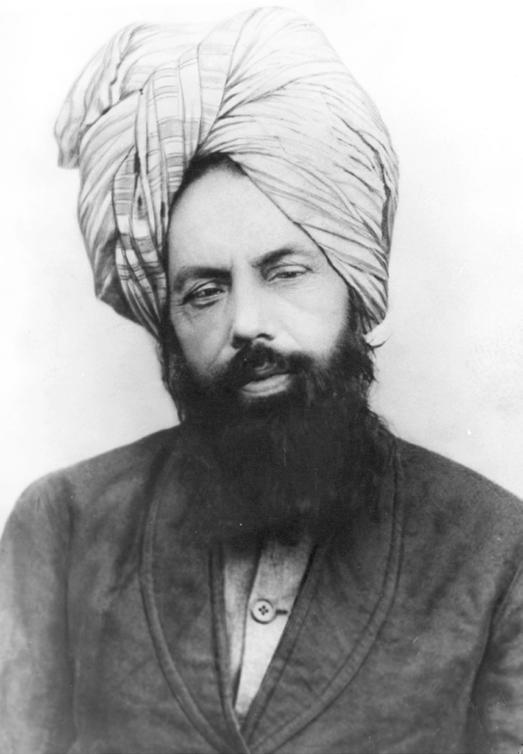
“Therefore, this principle is an ultimate truth and endless blessing, and withal lays the foundation for conciliation, in that we affrm the truthfulness of all prophets whose religion has been well-established, has survived for a long time period and has had millions enter its fold. This is a very blessed principle. If all the world were to adhere to this fundamental principle, thousands of disorders and blasphemies, which disturb the peace among general public, would be eradicated.”
“Therefore, this principle lays down the foundation of love, peace and harmony, and supports moral values, in that we consider all those prophets true who appeared in the world—whether
MARYAM | 5
in India, or Persia or China or any other country. God instilled their respect and grandeur in the hearts of millions and made frm the roots of their religion, which remained established for centuries. This is the principle that the Qur’an teaches us.
“In light of this principle, we honour all religious founders who fall under this description whether they are the founders of the religion of the Hindus, or the religion of the Persians, or the religion of the Chinese, or the religion of the Jews or the religion of the Christians. Unfortunately, our adversaries cannot treat us this way, and they do not bear in mind the pristine and unalterable law of God that He does not give that blessing and honour to a false prophet that He bestows upon the true one. The religion of a false prophet does not take root and does not last long as does the religion of a truthful prophet.
“Therefore, people subscribing to this kind of belief—who defame the prophets of other nations by declaring them false— are always enemies of peace and harmony, because there is no greater mischief than abusing the elders of other nations. Sometimes a person would rather die than hear disparaging words for his elders. If we have an objection over the teaching of a religion, we should not attack the honour of the prophet of that religion or mention him in an unseemly manner. Rather, we should object only on the current practices of that nation. We should be certain that the prophet whom God Almighty has graced with the honour of acceptance by millions, and whose acceptance has continued for centuries, is thus frmly proven to be from Allah. If he were not the beloved of God, he would not have achieved so much respect. It is not the practice of God to grant honour to a fabricator, to spread his religion among millions, and to safeguard the fabricated religion for a long time. Therefore, a religion which spreads in the world, takes root, and fnds honour and long life, cannot at all be false in its origin.”
“In summary, welfare of humanity, peace, harmony, righteousness, and fear of God call for adhering to the principle that we do not declare such prophets as false concerning whose truth the opinion of millions of people for centuries has been established, and they have been supported by God since time immemorial. I am confdent that a seeker of truth, whether Asian or European, will cherish this principle, and will profoundly regret that he did not believe in it all along.”
(Selected excerpts from ‘A Gift for the Queen’ p.5-8)
6 | MARYAM
The Essence of Fasting
“ T h e t h i r d p i l l a r o f I s l a m i s Fa s t i n g , t h e e s s e n c e o f w h i c h i s
s t i l l u n k n o w n t o p e o p l e T h e r e a l i t y i s t h a t a p e r s o n i s u n a b l e t o d e s c r i b e t h e c o n d i t i o n o f a n a r e a o r s t a t e t h a t h e h a s n e v e r e x p e r i e n c e d
Fa s t i n g d o e s n o t me a n t h a t ma n s h o u l d me r e l y r e f r a i n f r o m e a t i n g a n d d r i n k i n g , i t h o l d s a f a r g r e a t e r p u r p o s e a n d i t s e f f e c t c a n o n l y b e r e a l i s e d t h r o u g h e x p e r i e n c e I t i s t h e i n n a t e n a t u r e o f ma n t h a t t h e l e s s o n e c o n s u me s , t h e mo r e p u r i fi e d t h e s o u l b e c o me s a n d s p i r i t u a l s t r e n g t h s a c c e l e r a t e Go d d e s i r e s t h r o u g h t h i s t h a t w e d e c r e a s e o n e f o r m o f d i e t a n d i n c r e a s e i n a n o t h e r A p e r s o n w h o f a s t s s h o u l d a l w a y s b e a r i n mi n d t h a t t h e p u r p o s e i s n o t t o s t a r v e t h e ms e l v e s , b u t t o o c c u p y t h e ms e l v e s i n t h e r e me mb r a n c e o f Go d i n o r d e r t o d e v e l o p i n a s c e t i c i s m a n d s e l f -d i s c i p l i n e
T h u s , t h e e s s e n c e o f f a s t i n g i s f o r ma n t o l i mi t h i ms e l f f r o m o n e f o r m o f n o u r i s h me n t ( w h i c h n o u r i s h e s t h e b o d y a l o n e ) a n d a t t a i n o t h e r f o r ms o f n o u r i s h me n t , w h i c h s a t i s f y t h e s o u l T h o s e w h o f a s t s o l e l y f o r t h e p l e a s u r e o f Go d , a n d n o t j u s t a s a me r e r i t u a l , s h o u l d o c c u p y t h e ms e l v e s i n t h e p r a i s e , r e me mb r a n c e a n d a d o r a t i o n o f Go d , w h i c h w i l l u l t i ma t e l y p r o v i d e t h e m t h e o t h e r f o r ms o f n o u r i s h me n t ”
Ha z r a t Mi r z a Gh u l a m A h ma d , t h e P r o mi s e d Me s s i a h a s ( Ma l f u z a t , V o l 5 , p 1 0 2 ) h t t p s : / / w w w a l h a k a m o r g / t h e -e s s e n c e -o f -f a s t i n g /




MARYAM | 7
The Life and Character of the Seal of Prophets
)May Peace and Blessings of Allah be Upon him(
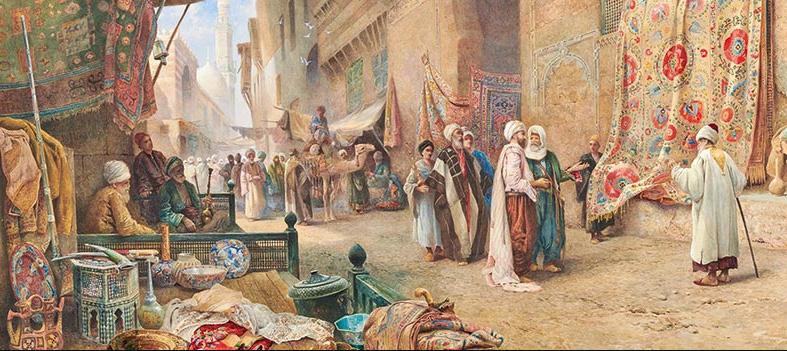
Division of Society in Madinah and Treaty with the Jews
It has already been mentioned that prior to the advent of the Holy Prophetsaw, the population of Madinah was divided into two segments. One was of the idolatrous people consisting of the Aus and Khazraj, and the second was of the Jews, which consisted of the three tribes already mentioned above. The arrival of Islam resulted in the creation of a third community, i.e., the Muslims. When the Holy Prophetsaw arrived in Madinah, another section was added to the population of Madinah, which was known as the hypocrites. In other words, the blessed person of the Holy Prophetsaw was like that heavenly rainfall, by which all kinds of plantation, be it good or bad, begins to manifest itself. After the migration of the Holy Prophetsaw, even the Muslim population of Madinah was distributed into two branches, and the terms Muhajirin and Ansar were introduced. As such, the following segments now existed in Madinah:
1FIRSTLY: The Muslims who were distributed into two branches:
(a) The Muhajirin, who were generally residents of Makkah, and had left their homeland, distressed by the persecution of the disbelievers.
(b) The Ansar, who were residents of Madinah, and took it upon themselves to afford assistance and protection to Islam, and the Founder of Islam. Almost all of them were from the Aus and Khazraj tribes.
8 | MARYAM
2 3
SECONDLY: The hypocrites, i.e., those people from the Aus and Khazraj who had apparently become Muslim, but were disbelievers at heart, and would secretly conspire against Islam and the Founder of Islam. Moreover, such people were also considered as being part of this group, whose actions, despite having believed, were generally at odds with true believers. Their relations with non-Muslims remained unaltered.
THIRDLY: The idolaters, i.e., those people from among the Aus and Khazraj who still firmly believed in polytheism.
4
FOURTHLY: The Jews, who were divided into the Banu Qainuqa‘, Banu Nadir, and Banu Quraizah.
Among these four sections, the first group and both of its branches were completely united around a single nucleus, because their eyes would look up to a single person in every matter. Although their habits, customs, and manners were different from one another, and in accordance with the ancient custom of Arabia; practice and tradition, their unification was not an easy task, but the doctrine of Islam, and the magnetic personage of the Holy Prophetsaw, suppressed all other emotions. The second group, which was of the hypocrites, was an extremely dangerous group. Apparently, these people were Muslims, but in their hearts, they were staunch enemies of Islam, and would burn in their malice and envy against the Holy Prophetsaw. In many instances, their secret conspiracies, and hidden mischief, brought about extremely dangerous situations for Islam and the Holy Prophetsaw. However, since these people were apparently referred to as Muslims,
and classified themselves as being followers of the Holy Prophetsaw, for this reason, they had no choice but to live their lives with the Muslims. In the very least, they were compelled to apparently submit to the rule of the Holy Prophetsaw. The third group was of the idolatrous people. These people existed in substantial numbers at the time of the migration, but afterwards, their numbers quickly began to diminish. In no time, the city of Madinah was cleansed completely of the element of polytheism. Although these people were not Muslims by religion, but under the influence of Arab civilization they felt a need to live in harmony with the majority of their Muslim brethren. Therefore, in a political context, these people were also under the flag of the Holy Prophetsaw, and submitted to his rule. The fourth group however, which consisted of the Jews was free and independent in every respect. It was far from
MARYAM | 9
the wise disposition of the Holy Prophetsaw, to leave the Jews of Madinah without a treaty in such circumstances, when the peace of the city and the lives and wealth of the Muslims were in potential danger. Moreover, due to the enmity of the Quraish, it was a matter of life and death for the Muslims. As such, very little time had passed since the migration, when the Holy Prophetsaw gathered the Muhajirin, Aus and Khazraj on the one hand, and the Jewish leaders on the other, and presented the need for a mutual treaty between the various people
of Madinah. Under this treaty, the future peace of the city, and the protection and welfare of different people, could be maintained; and no prospect of conflict or treachery would remain. Hence, at first, the Holy Prophetsaw established a few rules with relation to the internal policy and administration of the Muslims, among the Aus and Khazraj. After this, a treaty was mutually agreed upon with the Jews, which was formally put to writing. This treaty, which has been alluded to in the Ahadith and Holy Qur’an, has been recorded by history in full detail.
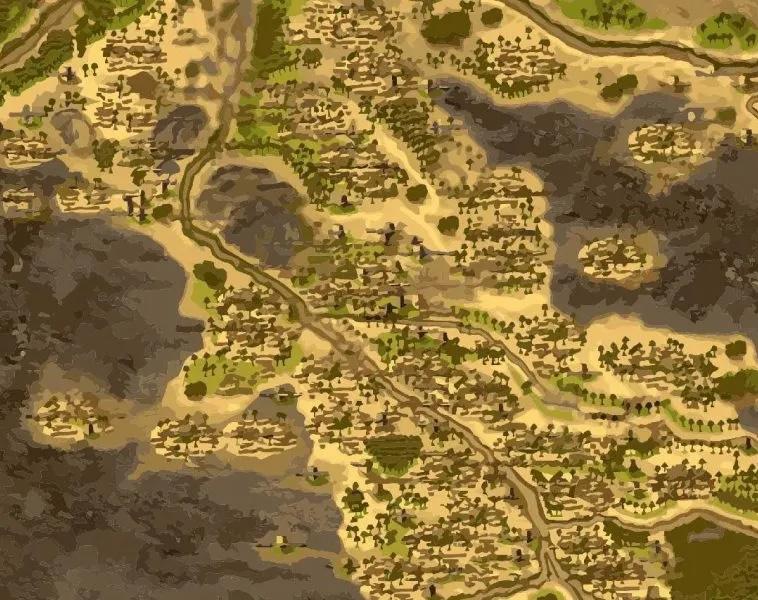
10 | MARYAM
At this place, we present the primary conditions of this treaty in our own words before our readers:
1. The Muslims and Jews would live together with sympathy and sincerity, and would not oppress or wrong each other.
2. All people would enjoy religious freedom.
3. The lives and wealth of all citizens would be honoured and safeguarded, except that an individual was guilty of oppression or criminality.
4. All disputes and conflicts would be presented before the Messenger of Allah for his judgement, and all verdicts would be in accordance with Divine Command (i.e., the Shari‘at of every specific people).
5. No party would set out for war without the permission of the Messenger of Allah.
6. If another nation waged war against the Jews or Muslims, one would stand up in defence of the other.
7. Similarly, if Madinah was attacked everyone would defend it collectively.
8. The Jews would not provide any aid or protection to the Quraish of Makkah or their allies.
9. Every community would bear their own expenses.
10. This treaty would protect no tyrant, criminal, or wrongdoer from punishment or retribution.
Due to this treaty mutual relations between the Muslims and Jews were strengthened. In a way, the foundation of a structured government was established in Madinah, whereby every community, despite being free in its religious and internal affairs, was regulated by a common law and central government. The Holy Prophetsaw was declared to be the head of this central government.
(The Life and Character of the Seal of Prophets, Vol 2, Division of Society in Madinah and Treaty with the Jews, pp. 25-27)

MARYAM | 11
THE
Historical Context Palestine - Israel OF
ConFLict
 By Hibbat Mirza
By Hibbat Mirza

“In our own time the country of the name of Palestine has altogether ceased to exist and on its ruins the State of Israel has been built. But this great historical event, too has taken place in fulfilment of a Quranic prophecy highlighted by Hazrat Musleh Mau’oodra. But this is only a temporary phase. The Muslims are destined to win it back. Let the whole world know that sooner or latersooner rather than later - Palestine will revert to Muslim possession. This is a Divine decree and nobody can alter God’s decree. God’s “righteous servants”, the followers of Hazrat Muhammad Mustafasaw shall definitely inherit this land. Neither America’s atomic bombs nor their hydrogen bombs can avert God’s decree.”
- Fazl-e-Umar p. 293
12 | MARYAM

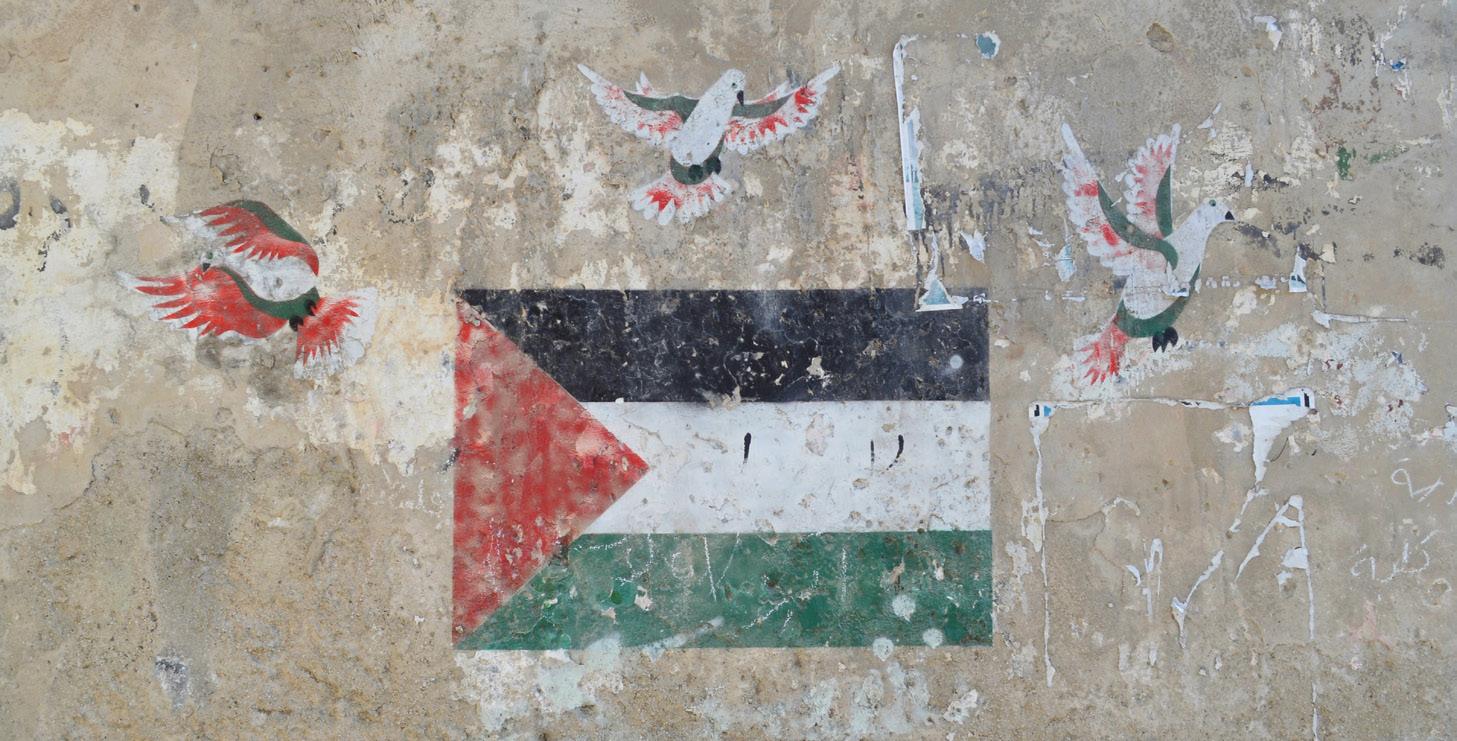

October 7, 2023 - a day many of us will remember as anxiety-inducing as we collectively held our breaths, waiting for the proverbial other shoe to drop. As reports claimed Hamas had attacked Israel by land, sea, and air; there was a distinct feeling that while for many a year, we had been on the edge of that distinct precipice that Hazrat Mirza Masroor Ahmad, Khalifatul Masih VMay Allah be his Helper had warned the world of over and over again, this was the moment that was the beginning of the world plunging into darkness and chaos.
While it’s been over 100 days since the conflict began between Israel and Gaza, I think many of us have felt constant anxiety, with the world plugged into social media now more than ever. How many of us
have checked first thing in the morning that the journalists in Palestine – Motaz, Wael, Hind, Bisan, Plestia - are still alive. That they’ve posted something after an internet blackout.
Seeing the flood of pictures and videos from Gaza and the lack of response from the Western world has been frustrating; but is it really unexpected when the aggressor is Israel?
Although the October 7 attacks that have sparked the current iteration of the Palestine - Israel war have been seventy years in the making, the PalestineIsrael issue goes back almost a century. Even though there is no end in sight for the conflict, it is important to understand the historical context and why today, there is a feeling that these acts of aggression could spiral the world into the next World War.
MARYAM | 13
Balfour Declaration
Let us start at the beginning. Back in 1917, the British had taken control of Palestinian territory from the Ottoman Empire. Under the Balfour Declaration, Britain publicly declared its’ aim to create a “National home for the Jewish people” 1.The statement, which was sent by former British foreign secretary Arthur Balfour to Lionel Walter Rothschild, was then included in the terms for the British mandate for Palestine, when the Ottoman Empire collapsed. The mandate was to establish the Jewish national home at a time when they were less than 10% of the population.
Britain enabled the immigration of the Jews to Palestine, where the population grew from 9% to 27% between 1922 to 1935. This became troubling for the Palestinians, leading to a rise in tensions before a revolt from 1936 to 1939. It is around this time that Zionism, originally a movement whose goal was to establish a Jewish nation, started gaining traction as a political philosophy. As it grew in popularity, armed Zionist militias became involved in skirmishes with the Palestinians, who were left with no choice but to escape.
The Balfour Declaration, The Balfour Declaration, according to Edward Said, a PalestinianAmerican academic, was “made by a European power … about a non-European territory … in a flat disregard of both the presence and wishes of the native majority resident in that territory”2. This agreement was also one of the three conflicting promises that were made by Britain with regards to Palestine:
1) It had promised Arabs independence from the Ottoman Empire in 1915.3
2) It had promised the French, in the 1916 Sykes-Picot agreement, that a majority of Palestine would be ruled internationally while the rest would be split between Britain and France after the war.4
3) It had promised to safeguard the rights of the Arabs while promising support for a Jewish homeland in Palestine.5
One might wonder what possessed Britain to have made such lofty promises. Many academics have said that one of Britain’s main concerns was to keep Egypt and the Suez Canal under its own influence by gaining control over Palestine6. It is this declaration that has been noted as a precursor to the 1948 Nakba.
14 | MARYAM
UN Partition Plan for Palestine
“In making this futile, this fatal attempt, you set at nought the wishes of sixty-six per cent of the people of Palestine. You destroy the faith and trust of all the surrounding and neighbouring States in the fairness and impartiality of the United Nations...In the hearts of the populations of all the countries from the North African Atlantic Coast to the steppes of Central Asia, you sow doubt and mistrust of the designs and motives of the Western Powers. You take the gravest risk of impairing, beyond the possibility of repair, any chance of real cooperation between East and West, by thus forcibly driving what in effect amounts to a Western wedge into the heart of the Middle East.” - Sir Chaudhary Muhammad Zafarullah Khan Sahib7
With the Balfour Declaration in place, tensions between Palestinians and Zionists erupted. Thus, in 1947, the recently established United Nations proposed Resolution 181. The proposed plan meant that the aforementioned British Mandate or Balfour Declaration would be concluded, giving the United Kingdom a deadline of August 1, 1948, to withdraw personnel. The new states would come into being by the 1st of October.
As the UN General Assembly discussed the separation of Palestine into two states, it is imperative to note that Sir Chaudhary Muhammad Zafarullah Khan Sahib delivered a speech that accounted for the rights of the Palestinians, which were largely being ignored. Reminding those present that the Arabs had, in fact, trusted the United Kingdom’s promise that by pledging their allegiance

MARYAM | 15
to the British and French – the Allies – and renouncing their loyalty to Turkey, they would be free in their own land8. Instead, the Palestinians found themselves subject to fulfilling another promise made by the British, which was to become a national home for the Jewish people9.
Regarding the boundaries, the UN Partition Plan for Palestine gave roughly 56% of Palestine to the Jews, while native Palestinians were granted 42% - with Jerusalem, Bethlehem and a portion of the adjacent area to be separated and kept under international control. Sir Zafarullah Khan Sahib argued, “The Arab State will be an Arab State in the sense that there will be only 10,000 Jews in it and almost 1,000,000 Arabs. Very well, but what of the Jewish State? In the Jewish State, there will be 498,000 Jews and 435,000 Arabs. Have you solved the problem? Jews are not to live as a minority under the Arabs, but the Arabs are to live as a minority under the Jews. If one of these is not fair then neither is the other; and if one is not a solution, the other is not.10”
With discontent brewing over the partition plan, the General
Secretary of the Arab LeagueAbdul Rahman Hassan Azzam - warned that while he wished both sides were not drawn into a conflict, a war between the Arabs and Jews would be one of elimination and comparable to the Crusades and the Mongol Massacre11. Despite these misgivings, the UN General Assembly adopted Resolution 181 (II) on November 29, 1947; after heavy lobbying by Zionist movements. After the vote - in which the US had voted in favour of the partition plan - President Truman remarked, “The facts were that not only were there pressure movements around the United Nations unlike anything that had been seen there before, but that the White House, too, was subjected to a constant barrage. I do not think I ever had as much pressure and propaganda aimed at the White House as I had in this instance. The persistence of a few of the extreme Zionist leaders - actuated by political motives and engaging in political threats - disturbed and annoyed me12.” As Zionists largely accepted the resolution, with hopes of expanding beyond the given boundaries; the Arabs were opposed to the partition and rejected the plan13.
16 | MARYAM

Thus, the Partition Plan was not realized after the November 29 resolution, instead violence erupted between the Palestinian Arabs and Jews. The matter was made worse as the British left in May 1948 due to the expiration of the British Mandate, creating a vacuum of power and no international regime in Jerusalem14. Unfortunately, this was only the beginning, as the Jewish People’s Council assembled at the Tel Aviv Museum and approved a proclamation which declared the establishment of the State of Israel15. And so began the 1948 Arab – Israeli War16.
The 1948 War - The First Nakba
May 15, 1948 – the day the State of Israel came into existence, and with it began a catastrophic period in the history of the Palestine – Israel Conflict, known
as the 1948 War. This period of time is also referred to as the Nakba, as it marked the ethnic cleansing of the native Arabs and a obliteration of Palestinian society17
This dispossession and loss of their homeland saw at least 750,000 Palestinians out of 1.9 million, flee to neighbouring countries18. Zionist militias forcibly took control of 78% of historic Palestine, ethnically cleansing and destroying 530 villages and killing approximately 15000 Palestinians in roughly 70 massacres19. This war was the second and conclusionary stage of the 1947-1948 civil war in Mandatory Palestine20. Starting in November 1947 and ending in January 1949, the war saw Zionist groups attack crowded places by placing bombs or throwing grenades at bus stops, shopping centers, and markets. As each side attacked and
MARYAM | 17
defended itself from reprisals, the general conditions and economic situation deteriorated, with unemployment growing21.
Becoming the first Prime Minister of Israel and vital to the state’s foundation, David Ben-Gurion along with his chief advisors had developed several plans, but their main point was to transfer as many Arabs out of Jewish territory as possible22 According to Plan Dalet, if there was resistance when taking over a village, then the population was to be expelled out of the borders of the Jewish state; however, if there was no resistance, the residents were permitted to stay under military rule23.
The most significant event arose as the fighting came to an end: the Lausanne Conference of 194924. It was at this time that the State of Israel became a member of the United Nations. At this critical juncture, while taking an oath to accept and honour the obligations of the UN Charter, Israel made an offer to allow 100,000 refugees to return25. Contingent on a peace treaty where Israel would be allowed to retain the territory it had captured, and which had been previously allocated to the
Palestinians by the UN Partition Plan; needless to say, this offer was rejected by the Arab states and withdrawn by Israel26. In fact, once the armistice had been signed to put an end to the bloodshed and with Israel now a member of the UN, BenGurion did not feel the need to entertain any comprehensive peace settlement27.
The Intifada & The Oslo Accords
The First Intifada began in December 1987. This Palestinian uprising saw a series of sustained protests, civil disobedience and riots carried out in Israeli-occupied Palestinian territories and Israel28. Brought about by the sheer frustration over Israel’s military occupation of the West Bank and Gaza Strip and its mistreatment of the Palestinians, i.e. beatings, executions, house demolitions and detentions without trial. The catalyst was a collision of an Israeli army tank transporter with a civilian car that killed four Palestinian workers and injured seven30. The Palestinians believed it had been done purposefully in retaliation for the death of an Israeli in Gaza days prior31.
18 | MARYAM
The aim of the Intifada was that the Palestinians demanded Israel withdraw from the territories it had occupied in the 1967 war and lift curfews and checkpoints. It called for the establishment of a Palestinian state on the West Bank and Gaza Strip, having resigned from demanding that all of Palestine be returned32. With fierce protests and general strikes and boycotts, the State of Israel sent in 80,000 soldiers to quell the dissent. Initially, the soldiers used live rounds and excessive force33. The Human Rights Watch criticised Israel for its use of unwarranted lethal force, which led to the use of plastic bullets34.
To further aggravate an already dire situation, twenty-two Palestinians were killed by Israeli police in October of 1990, in the Al-Aqsa compound on the Temple Mount, Jerusalem. A holy site for both Judaism
and Islam, the Temple Mount Killings or Al Aqsa Massacre, forced the United Nations Security Council to intervene, with the UNSC passing resolution 672, condemning violence committed by the Israeli security forces35. However, Israel rejected it and refused to allow the United Nations Secretary General to carry out an investigation, alleging that the Palestinians had attacked Jewish worshippers at the Western Wall and staged the provocation36
As Israel’s image suffered a blow, it fueled a surge in support for the PLO, elevating Yasser Arafat to leadership. It was under Arafat, that the focus shifted to recognize Israel’s legitimacy but also to accept the November 29, 1947 UN Partition Plan of a twostate solution37. Arafat started to moderate the PLO’s political agenda, and with that came the signing of the Oslo Accords.

MARYAM | 19
The first of the Oslo Accords was signed in September 1993, where both leaders of Israel and Palestine pledged to end the decades-long conflict. The second of the Oslo Accords was signed in September 1995, and provided the structure for the peace process38. The accords were to assist in realizing Palestinian self-determination, giving way for a Palestinian state in conjunction with Israel. While the Palestinians would be able to claim national sovereignty, it would be limited to a segment of historic Palestine39. The Oslo Accords designated the control of three areas of the occupied West Bank – Area A would be under Palestinian Control, Area B would be under joint IsraeliPalestinian control, and Area C would be under Israeli control. Area A was roughly 18%, while Area B was 22%, and Area C was 60%40.
In order to comply with the accords, the first step was to partially withdraw Israeli forces from Gaza and Jericho and transfer some of the power and responsibility to the interim Palestinian Authority within two months41. Secondly, the Israeli troops were to be removed from Palestinian populated areas and dissolve the Israeli
Civil Administration in the West Bank42. While a peace treaty ended the Israeli-Palestinian conflict, Israeli troops were not removed and the Israeli Civil Administration remains present over 80% of the West Bank to this day43. The final treaty that was supposed to be reached within five years was also left incomplete44.
The Aftermath
Unfortunately, the Oslo Accords proved to be unsuccessful, as within six months of signing, an American-Israeli physician, Baruch Goldstein, carried out a massacre inside the Ibrahimi Mosque during the Jewish holiday of Purim, which overlapped with Ramadan, on the 25th of February, 199445. A member of the far-right ultraZionist movement Kach, he killed 29 people and wounded 12546. This not only added to tensions, but the Oslo Accords were further strained when Hamas, which had formed after the First Intifada, retaliated by suicide bombing Israel for the first time – killing 55 Israelis and injuring 15047. It was evident that both sides harbored extremist factions determined to sabotage the peace process at any cost; as Israeli Prime Minister Yitzhak
20 | MARYAM
Rabin, a signatory of the accord, was later assassinated by an ultranationalist Israeli law student48. Moreover, Rabin was succeeded by a string of farright Prime Ministers, including Benjamin Netanyahu, who continued the expansion of settlements49. While there were many factors that undermined the Oslo Accords, critics have argued that the accords themselves undermined Palestinian statehood, as they provided the “vestiges of statehood without actual content”50.
Throughout the years since, there has been a resurgence of conflict, with the Second Intifada taking place from 2000 to 2005. By 2006, Hamas had won 44% of the parliamentary elections, with Israel threatening to impose economic sanctions if Hamas did not accept prior Israeli-Palestinian agreements51. Predictably, Hamas did not yield to Israel’s demands.
Moreover, in 2007, Hamas found itself at war with its political counterpart, Fatah. The struggle turned into the Battle of Gaza, with Hamas attacking posts held by the Fatah party52. The internal conflict led to Palestinian President Mahmoud Abbas declaring a state of emergency53. During this time, Israel implemented a blockade on Gaza and with the co-operation of Egypt, a ground blockade was put in place on the Egyptian border54. In the end, the Battle of Gaza resulted in Hamas taking control of the Gaza Strip, while the Palestinian National Authority governed the West Bank55.
The following year came with more turmoil, as tensions escalated between Israel and Hamas. What ensued was a three-week conflict from December 27, 2008 to January 18, 2009, in which thousands of Palestinians lost their lives56 Similarly, sporadic attacks

MARYAM | 21
from both sides over the years, led to another major event in 2014. This time, the Israeli Defence Forces launched a military operation in the Gaza Strip after the murder of three Israeli teenagers in the West Bank57. The deadly conflict saw Israeli airstrikes and retaliatory Palestinian rocket attacks, the death toll – standing at over 2000 – was largely Gazans58.
Where We Are NowCurrent Palestine-Israel Conflict
“The issue of Palestine remains unsettled to this day. The Palestinians, driven from pillar to post, are leading a miserable life. The cruelties of the Israelis continue unchecked. Muslim blood is being shed. Even the life and honour of women and children is at risk. However, no one has paid attention to the unity and collective sacrifice that the Muslims were called to. This issue will definitely be resolved. The Holy Land will forever return into the hands of the “righteous worshippers” (The Holy Qur’an Ch.21:V.106). However, this will only happen through collective sacrifice and heartfelt prayers which a man of God advised some time ago. All other efforts have
led to nothing but failure and disgrace.” (Fazl-e-Umar p. 378)
Condensing the extensive and intricate history of the Palestine-Israel conflict is challenging, especially the process of determining which events should be highlighted. As mentioned at the beginning, the current Palestine-Israel conflict broke out on October 7, 2023; after Hamas militants allegedly attacked Israeli festival goers, in which 1400 Israelis were killed and approximately 200 were taken hostage. Following this, Israel has been viciously bombarding the Gaza strip in order to eradicate Hamas militants. The current crisis has seen some of the worst destruction and inhumane actions. Highlighted by social media, the death toll in Gaza currently stands at over 28000 –of which over 8600 are children and over 6300 are women, while countless are missing.
Analysing the current conflict, it is imperative for us to grasp the underlying politics at play, particularly those that surround the state of Israel. For that, we must take a closer look at Benjamin Netanyahu, the current Prime Minister of Israel. Elected in November 2022,
22 | MARYAM
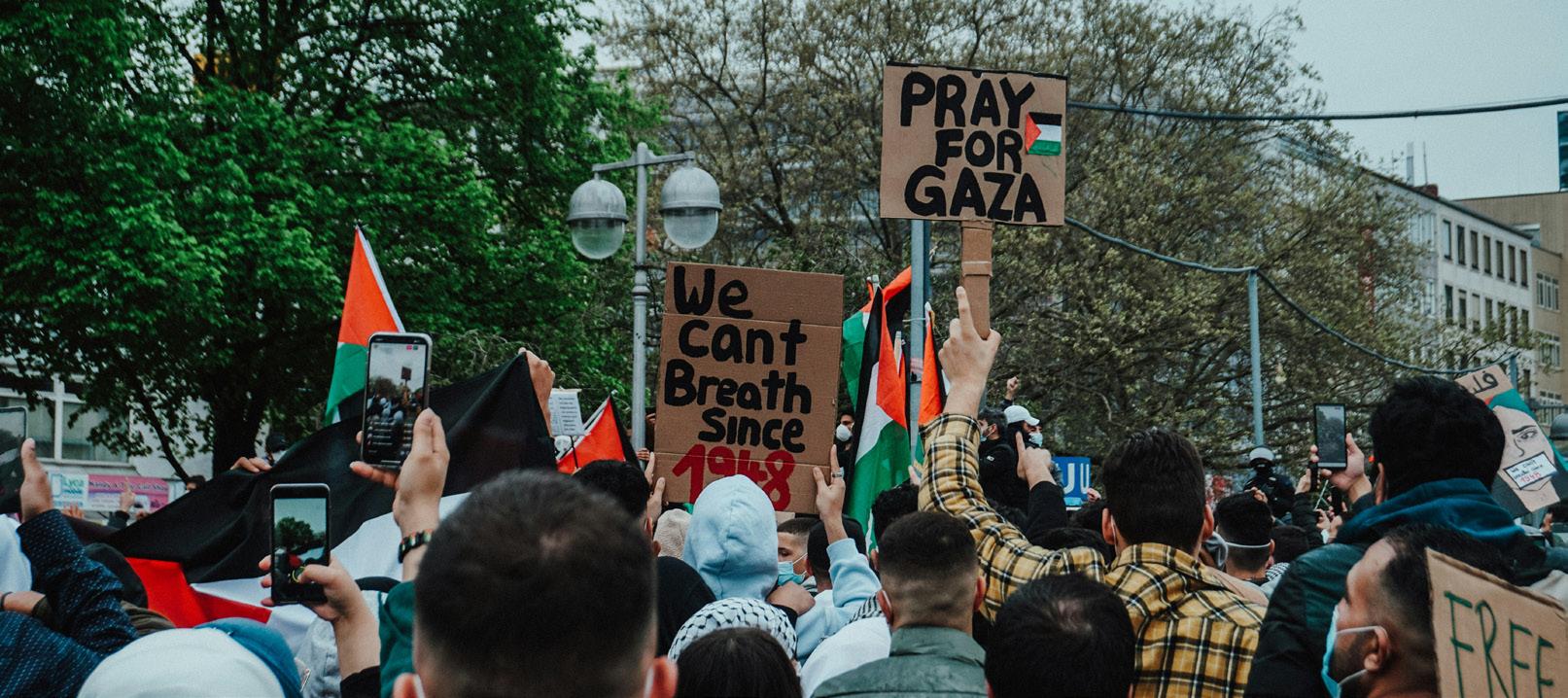
the current far-right leaning government of Israel consists of seven parties and is headed by veteran Prime Minister, Benjamin Netanyahu. Leader of the Likud Party, Netanyahu has been formally indicted on bribe and fraud charges in three different cases. He is the first sitting prime minister in the history of Israel to be charged and his trial is still on going59. With Netanyahu starting his fifth and sixth terms under these conditions, it is important to note the unrest developing throughout the state of Israel. From 41 consecutive weeks of protests starting in September 2017 over the delay in charges being laid against Netanyahu, to strikes and protests over judicial reforms that would include limiting the Supreme Courts’ powers and erode the independence of the judiciary in 202360. Furthermore, many Israeli and American academics
have stated that, “The ultimate purpose of the judicial overhaul is to tighten restrictions on Gaza, deprive Palestinians of equal rights both beyond the Green Line and within it, annex more land, and ethnically cleanse all territories under Israeli rule of their Palestinian population”61.
Thus, while we continue to observe the situation, it is important for us to remember the instructions given to us by beloved Hazoor-e-Aqdasaba, that we must all, collectively, pray for the situation of the Palestinians and we must supplicate to Allah the Almighty that the Western countries do their part in upholding not only justice but the rights of those oppressed. We must also pray that the Muslim countries come together and play their role. In several Friday Sermons, Hazoore-Aqdasaba has also repeatedly
MARYAM | 23
warned Muslim nations that they must unite or otherwise face grave destruction.
Although it is dangerous to speculate what this year will bring and if we will be able to avoid the path of ruin the
world has started on, one thing has been made clear. For, as Hazrat Musleh Maudra states, “The time has come for us to decide whether we should die one by one, or work together diligently for victory.” (Fazl-e-Umar p. 376)
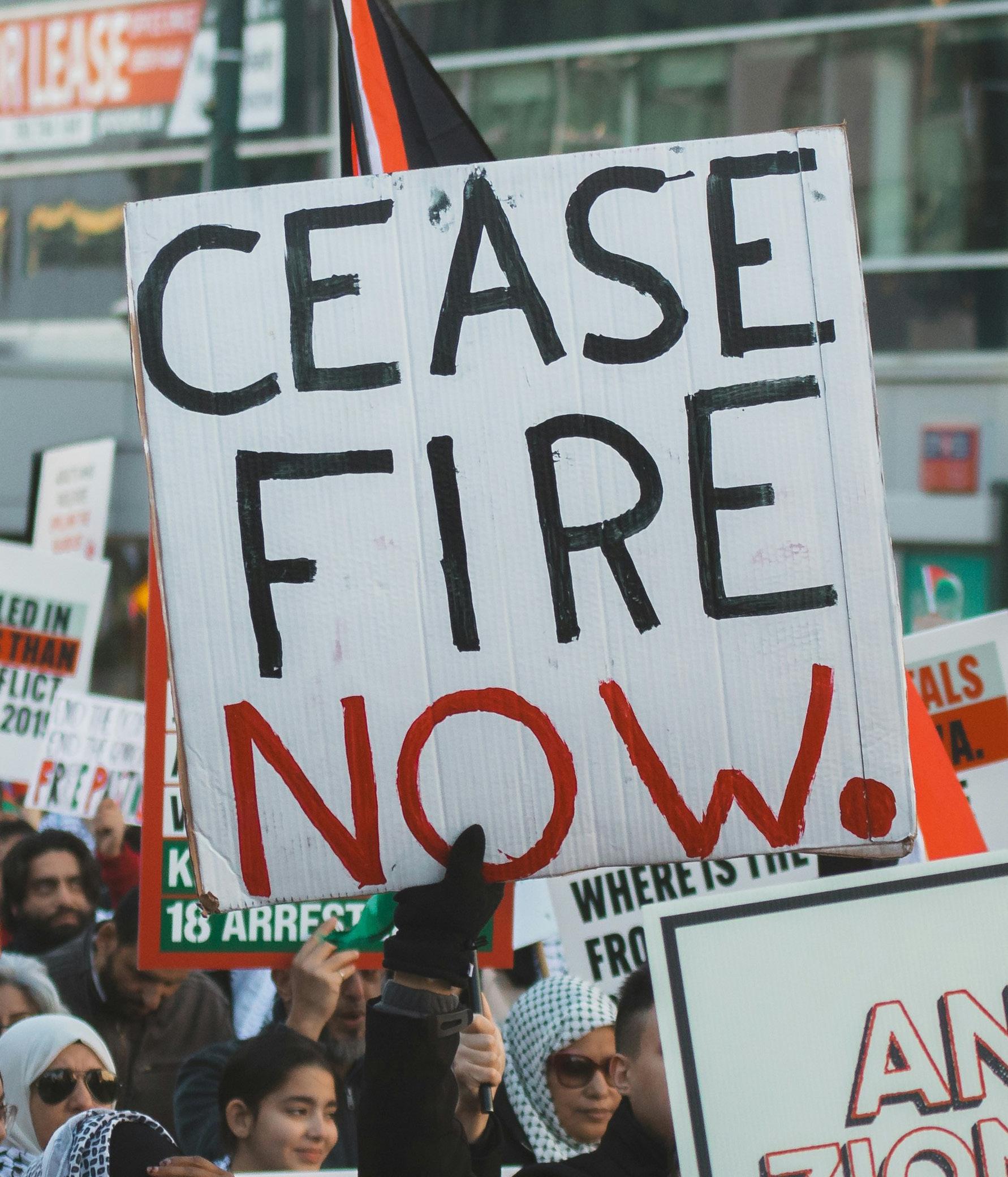
24 | MARYAM

References
1 Tahhan, Z. A. (2018, November 2). More than a century on: The balfour declaration explained. Al Jazeera. https://www. aljazeera.com/features/2018/11/2/more-than-a-century-on-the-balfour-declaration-explained
2 Tahhan, Z. A. (2018, November 2). More than a century on: The balfour declaration explained. Al Jazeera. https://www. aljazeera.com/features/2018/11/2/more-than-a-century-on-the-balfour-declaration-explained
3 The contradictory promises - Balfour Project. Balfour Project - Contributing to justice, peace and reconciliation in the Middle East. (2020, October 29). https://balfourproject.org/the-contradictory-promises/#:~:text=1917%20Balfour%20 Declaration%20–%20Britain%2C%20in,the%20Ottoman%20Turks%2C%20including%20Palestine
4 Ibid.
5 Ibid.
6 Tahhan, Z. A. (2018, November 2). More than a century on: The balfour declaration explained. Al Jazeera. https://www. aljazeera.com/features/2018/11/2/more-than-a-century-on-the-balfour-declaration-explained
7 Editorial. (2023, November 1). Defending palestinian rights: An appeal to the world by Sir Zafrulla Khan. The Review of Religions. https://www.reviewofreligions.org/31211/the-palestinian-question-united-nations/
8 Editorial. (2023, November 1). Defending palestinian rights: An appeal to the world by Sir Zafrulla Khan. The Review of Religions. https://www.reviewofreligions.org/31211/the-palestinian-question-united-nations/
9 Ibid.
10 Haddad, M., & Chughtai, A. (2023, November 29). A brief history of israel-palestine conflict in 10 maps. Al Jazeera. https://www.aljazeera.com/news/2023/11/27/palestine-and-israel-brief-history-maps-and-charts Editorial. (2023, November 1). Defending palestinian rights: An appeal to the world by Sir Zafrulla Khan. The Review of Religions. https://www.reviewofreligions.org/31211/the-palestinian-question-united-nations/
11 https://www.meforum.org/3082/azzam-genocide-threat
12 Lenczowski, George (1990). American Presidents and the Middle East. Duke University Press. p. 157. ISBN 978-0-82230972-7., p. 28, cite, Harry S. Truman, Memoirs 2, p. 158.
13 Benny Morris (2008). 1948: a history of the first Arab-Israeli war. Yale University Press. pp. 66, 67, 72. ISBN 978-0-30012696-9.
14 Yoav Gelber, Independence Versus Nakba; Kinneret–Zmora-Bitan–Dvir Publishing, 2004, ISBN 978-965-517-190-7, p.104
15 United Nations. (n.d.). Documents archive - Question of Palestine. United Nations. https://www.un.org/unispal/ documents/
16 United Nations. (n.d.-b). Las Cablegram to SG - Question of Palestine. United Nations. https://www.un.org/unispal/ document/auto-insert-214183/
17 Al Jazeera. (2017, May 23). The Nakba did not start or end in 1948. https://www.aljazeera.com/features/2017/5/23/the- nakba-did-not-start-or-end-in-1948
18 Ibid.
19 Ibid.
20 Wikimedia Foundation. (2024, January 23). 1947–1948 Civil War in mandatory Palestine. Wikipedia. https:// en.wikipedia.org/wiki/1947%E2%80%931948_civil_war_in_Mandatory_Palestine
21 Gelber, Yoav (2006). Palestine 1948. War, Escape and the Emergence of the Palestinian Refugee Problem. Sussex Academic Press. ISBN 978-1-84519-075-0.
22 Pappé, Ilan (2006). The Ethnic Cleansing of Palestine. Oxford: One World Books. (2006) ISBN 978-1-85168-467-0
23 Gelber, Yoav (2006). Palestine 1948: War, Escape And The Emergence Of The Palestinian Refugee Problem. Sussex Academic Press. p. 306. ISBN 978-1-84519-075-0.
24 Caplan, Neil (1992). “A Tale of Two Cities: The Rhodes and Lausanne Conferences, 1949”. Journal of Palestine Studies. 21 (3): 5–34. doi:10.2307/2537517. ISSN 0377-919X. JSTOR 2537517.
25 UNSC, 4 March 1949 Resolution 69 (1949) [doc.nr. S/RES/69 (1949)]
26 Morris, Benny (2004). The Birth of the Palestinian Refugee Problem Revisited. Cambridge University Press. ISBN 978-0-521-81120-0.
27 Pappe, Ilan (1992). The Making of the Arab–Israeli Conflict 1947–1951. I.B. Tauris. ISBN 1-85043-819-6.Chapter 9: The Lausanne Conference.
28 “Intifada begins on Gaza Strip”. HISTORY. Retrieved 5 February 2024.
29 Ackerman, Peter; DuVall, Jack (2000). A Force More Powerful: A Century of Nonviolent Conflict. New York: Palgrave. ISBN 978-0-312-24050-9.
30 Ibid.

31 Michael Omer-Man The accident that sparked an Intifada, 12/04/2011
32 Walid Salem, ‘Human Security from Below: Palestinian Citizens Protection Strategies, 1988–2005,’ in Monica den Boer, Jaap de Wilde (eds.), The Viability of Human Security, Amsterdam University Press, 2008
33 “The Israeli Army and the Intifada – Policies that Contribute to the Killings”. www.hrw.org. Retrieved 5 February 2024.
34 Audrey Kurth Cronin ‘Endless wars and no surrender,’ in Holger Afflerbach, Hew Strachan (eds.) How Fighting Ends: A History of Surrender, Oxford University Press 2012 pp. 417–433 p. 426.
35 Report (1991). “The Haram Al-Sharif (Temple Mount) Killings”. Journal of Palestine Studies. 20 (2): 134–159. doi:10.1080/ 07329113.2017.1388100. JSTOR 2537210. S2CID 220316137. Retrieved November 6, 2020.
36 Anthony Lewis (October 12, 1990). “ABROAD AT HOME; The Israeli Tragedy”. nytimes.com/opinion. Retrieved September 9, 2015. Cuéllar, Javier Pérez de (1997). Pilgrimage for peace: a Secretary-General’s memoir. Palgrave Macmillan. p. 96. ISBN 978-0-312-16486-7.
37 Shlaim, Avi (2000). The Iron Wall: Israel and the Arab World. London: Penguin. ISBN 978-0-14-028870-4.
38 Al Jazeera. (2023, September 26). What were the Oslo Accords between Israel and the Palestinians? https://www. aljazeera.com/news/2023/9/13/what-were-oslo-accords-israel-palestinians
39 Ibid.
40 Haddad, M., & Chughtai, A. (2023a, November 29). A brief history of israel-palestine conflict in 10 maps. Al Jazeera. https://www.aljazeera.com/news/2023/11/27/palestine-and-israel-brief-history-maps-and-charts
41 Mideast accord: the overview; Rabin and Arafat sign accord ending Israel’s 27-year hold on Jericho and the Gaza Strip Archived 9 December 2020 at the Wayback Machine. Chris Hedges, New York Times, 5 May 1994.
42 Annex I: Protocol Concerning Redeployment and Security Arrangements, Article I Redeployment of Israeli Military Forces and Transfer of Responsibility. Annex I to the Interim Agreement on the West Bank and the Gaza Strip (Oslo II)
43 What is Area C? Archived 6 January 2016 at the Wayback Machine. B’Tselem, 9 October 2013
44 Ibid.
45 George J. Church,”When Fury Rules”, Time 7 March 1994
46 Settlers remember gunman Goldstein; Hebron riots continue Archived 6 January 2014 at the Wayback Machine. Avi Issacharoff and Chaim Levinson, Haaretz, 28 February 2010
47 Patterns of global terrorism, 1994: Middle eastern overview. (n.d.). https://irp.fas.org/threat/terror_94/midleeast.html
48 Smith, Charles D. Palestine and the Arab-Israeli Conflict A History with Documents, ISBN 0-312-43736-6.
49 “Extraordinary Increase in Settlement Construction as Diplomacy Falters”. Settlement Report. Foundation for Middle East Peace. 8 (2). March–April 1998. Archived from the original on 14 April 2013.
50 Anziska, Seth (2018). Preventing Palestine: A Political History from Camp David to Oslo. Princeton: Princeton University Press. ISBN 9780691177397.
51 Erlanger, Steven (18 February 2006). “Hamas Leader Faults Israeli Sanction Plan”. The New York Times. ISSN 03624331. Archived from the original on 5 March 2022.
52 Hamas launches new Gaza attacks, BBC News Online, 12 June 2007.
53 Levinson, Charles; Matthew Moore (June 14, 2007). “Abbas declares state of emergency in Gaza”. The Daily Telegraph. London. Archived from the original on June 18, 2007. Retrieved June 14, 2007.
54 “Light at the End of Their Tunnels? Hamas and the Arab Uprisings”. International Crisis Group. 14 August 2012. p. 38, note 283. Archived from the original on 2 September 2012.
55 Erlanger, Steven (13 June 2007). “Hamas Forces Seize Control Over Much of Gaza”. The New York Times.
56 Al-Mughrabi, Nidal. Israel tightens grip on urban parts of Gaza Archived 9 January 2009 at the Wayback Machine
57 ‘Mashal: Hamas was behind murder of three Israeli teens’, Ynet, 22 August 2014.
58 Zonszein, Mairav (27 March 2015). “Israel killed more Palestinians in 2014 than in any other year since 1967”. The Guardian. ISSN 0261-3077. Armed, Palestinian. “State of Palestine: Unlawful and deadly: Rocket and mortar attacks by Palestinian armed groups during the 2014 Gaza/Israel conflict - Amnesty International”.
59 Marsden, Ariella (3 December 2023). “Netanyahu’s corruption trial resumes under shadow of war”. The Jerusalem Post. Retrieved 6 December 2023.
60 Wikimedia Foundation. (2024b, February 3). 2023 Israeli judicial reform protests. Wikipedia. https://en.wikipedia.org/ wiki/2023_Israeli_judicial_reform_protests
61 Guardian News and Media. (2023, August 15). US jews urged to condemn Israeli occupation amid Netanyahu censure. The Guardian. israel-palestine-netanyahuhttps://www.theguardian.com/world/2023/aug/15/us-jewish-groups-statement-occupationAcademics4peace - Aug ’23: Elephant in the room petition. (n.d.-a). https://sites.google. com/view/israel-elephant-in-the-room/aug-23-elephant-in-the-room-petition?authuser=0
MARYAM | 25
Humanity’s FOR SAKE
My heart bleeds, yet life must go on. My mind is running miles in a marathon.
These horrors I watch in the silence of night, Murdered children, torn families - a deadly sight.
What now?! Writing names on limbs just in case, Lest they be blown to shreds, no face, not a trace.
Battered homes, broken bodies yet spirits intact, Enduring this Hell, committed to His pact.
Their faith, their commitment, puts many to shame, Dear Lord, accept their struggle, let it not be in vain.

The day forces me back into daily routine, Around me is deafness and denial, unseen.
Is it not happening? Was it all a dream? How could it be? For I know what I’ve seen.
I’m living two lives, two realities, it seems, As “progressive” powers stifle the screams.
“Never again” they said - I know now what they meant, For some lives are worthy while others are spent.
26 | MARYAM

A wrong is a wrong, what’s right is right, Don’t change the story when your hand holds the might.
For taking a life, is death to us all, And united we stand, divided we fall.
Shed the ignorance, the shackles of lies, It’s okay to turn around, say you’ve heard the cries.
We can fix this together, make the world shine bright, Speak truth to power, pray with all of our might.
For they plan, and He plans, and His is the better, We can rebuild this world, stronger, together.
As a place of humanity, in its truest sense, Let us care for each other, right wrongs, recompense.
For humanity’s sake, That’s what’s at stake.
Sabahat Khalil
MARYAM | 27
Involving your children in the spirit of Ramadan
Saima Snobar Ahmad
Year after year, Muslims around the world look forward to the precious month of Ramadan. It has been narrated in a Hadith:
“When the month of Ramadan enters, the gates of Heaven are flung open and the gates of Hell are shut, and Satans are chained.”
(Sahih Al-Bukhari, Kitab Al-Saum, Bab: Hal yuqalu Ramadanu au shahru Ramadana)
Merely the act of fasting to obey the commandment of Allah Almighty strengthens the special bond between Allah and his creation. This leads one to live his/her life in accordance with the principles of Allah Almighty and gives one the power to overcome all evil thoughts and actions. Fortunate are those who take advantage of this opportunity to strive to attain Allah Almighty’s pleasure and detach themselves from all worldly pursuits.
It is not compulsory for young children to fast; in fact, this invites Allah Almighty’s displeasure as it is sinful to make young children fast until they have reached a certain age of early adulthood. However, involving and educating them from a young age is extremely important for their upbringing and this could ultimately help them develop a love and eagerness towards fasting in their early adulthood.
28 | MARYAM

In Ramadan it is important to create an environment at home to inculcate the spirit and importance of this month from a young age.
























From the age of three, children start to ask questions about anything and everything, so this is a great opportunity for you to educate yourself about the history of Ramadan so that you can creatively share it with them. Our role as mothers should be to explain to our children that Ramadan is the month in which the Angel Gabriel came to visit the Holy Prophet (may peace and blessings be upon him) to reveal the Holy Qur’an so we should thank Allah Almighty for telling us in writing what is right and what is wrong.
The importance of prayer can be shown to young children through congregational prayer at home or at the mosque. A very important aspect of keeping a fast is to read the five daily prayers on time and extra Nawafil prayers. Doing this in front of children will show them how important and comforting Salat is. If children are under 10 years old, they can be given their own small prayer mat and asked to look after it and lay it next to yours every day at prayer time. This will teach them a sense of responsibility, and they will surely start to develop enthusiasm towards performing prayer on time. Carrying on with this habit even after Ramadan will help to instil this habit in them for the future.






The importance of reading the Holy Qur’an can be done so by Darsul Qur’an at the mosque or even conducting it at home. This can also increase skills such as listening and sitting down quietly. If your child has finished reading Yassarnal Qur’an and is ready to start reading the first round of the Holy Qur’an, giving them their own copy of the Holy Qur’an and teaching them how to care for it at a young age will help develop respect in their hearts for the Holy Qur’an and help them appreciate how special it really is.
MARYAM | 29
Involving your children’s nursery/school teachers in the blessed month of Ramadan is a great opportunity for Tabligh! Asking if they would be interested in having a Ramadan talk at school is a great way for your children to become more confident in talking about Ramadan to their friends and peers. Perhaps with the help of your children, making some Iftar snacks such as almond dates or samosas and distributing them to the teachers or other parents is a great way to extend the blessings of Ramadan to others and a brilliant conversation starter to start forming Tabligh contacts. If your children are in nursery or Key Stage 1 (early years of primary school), providing some Ramadan printouts for the class, after seeking permission, is another way to get them involved in Ramadan talk.




































































Involving young kids at Iftar can give them a sense of excitement, as the whole family sits around the table to open their fasts; they should be allowed to join too. As any mother with young children has experienced, Iftar is a very busy time; making sure everything is prepared and ready, especially whilst looking after the little ones at the same time. It is very tempting to take the easy route and distract them with phones or tablets and cartoons, but we should remember this can be detrimental to the child as it excludes them from spending time with the rest of the family and can be detrimental to their upbringing. Instead, it would be more beneficial to calmly involve and teach them about what Iftar is and explain this time should be spent in the remembrance of Allah. If they have reached a certain age, children should be taught how to sit quietly and, out of respect, wait until iftar opens to start eating food which is on the table.
Ramadan Islamic Month Fasting Prayers Holy Quran
30 | MARYAM
Since young children should not fast, they can be taught how to attain the nearness of Allah Almighty in other ways during Ramadan, such as staying away from bad practices and bad company. At the start of Ramadan, sit down with your children and ask them if they could change one bad habit about themselves, what would it be? For example, arguing, being impolite or lying and making the aim of removing it before the month of Ramadan draws to an end. Mothers should themselves get rid of bad habits, as young children are like mirrors of their mothers.


Ramadan is also a great opportunity to attain knowledge. Watching the many beneficial programs on MTA is a great way to do this; we can encourage our children to watch MTA even more regularly during Ramadan. Reading books is one of the best ways to increase our knowledge in so many different aspects of life. Children who read or are read to, have better thinking capabilities, improved cognitive skills and are more likely to understand what is going on around them. Ramadan is a great opportunity to make a habit of reading Islamic children’s books to increase Islamic knowledge. There are many short story books about prophets, such as Hazrat Adamas, Hazrat Khadijara, Hazrat Musaas and many more, which are available to order from the Lajna Ishaat Department UK. There are also short story books titled ‘Five Pillars of Islam, ‘The Book of Islamic Rhymes’ and ‘The Best Example of Skills’. These are written in simple English so that children can understand them and learn from them.
MARYAM | 31
Giving your children their own Sadqa box, which they can decorate themselves if they wish at the start of Ramadan. This can also be a good way to inculcate the importance of giving charity. Mothers should explain to their children where the Sadqa money goes and who it benefits. This will support them to understand the reasoning behind the importance of charity. Mothers should explain to their children how lucky we are to live in a country where we are provided with clean water without walking miles on end to find it, how lucky we are to wear clean clothes every day and have fresh food on our tables for dinner. Putting a few coins into the Sadqa box every day after Iftar can help them develop a long-life habit of giving charity.
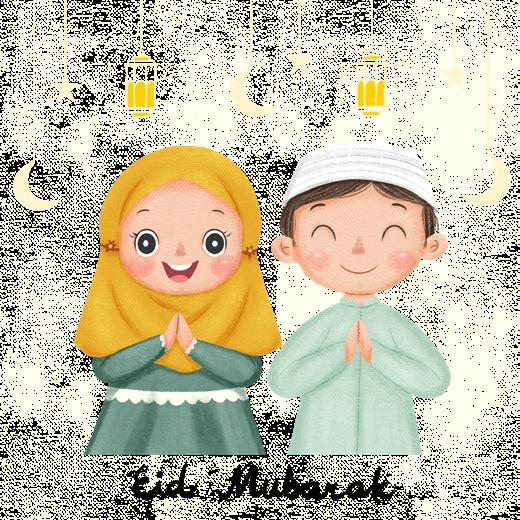








Islam has given great significance to the day of Eid. Eid-ul-Fitr marks the end of the Holy month of Ramadan. If possible, children should wear new outfits and be taken to the mosque for Eid prayers, as it brings joy and happiness and serves as a reward for those who engaged themselves in fasts, prayers and good deeds to attain the love of Allah Almighty during the month of Ramadan.
As Hazrat Mirza Masroor Ahmad (May Allah be his helper) beautifully explained in the Friday Sermon of April 29th 2022, the end of Ramadan does not mean the end of our responsibilities: “Even though the month of the obligatory fasts is coming to an end, the time to elevate the standard of our other obligations and striving to excel in them is now upon us. After the month of Ramadan, if we forget this reality of how one should maintain the [high] standards of our responsibilities and obligations, then we have not observed the month of Ramadan in accordance with the guidance of the Holy Prophetsaw”.
Therefore, we should strive to continue to encourage all the good habits which we inculcated in our children in Ramadan all year round. We should pray for our children tirelessly every single day. May our children be powerful servants of Allah Almighty and always be attached to Khilafat Insha’Allah. Ameen.
32 | MARYAM


Whether you look at it as the month that God has given precedence above other months; whether you bear in mind its significance as a month where prayers are said more; whether it is looked at as a month where Muslims must strive hard; whether you observe its significance in that the weakest of people get the opportunity to partake in its blessing from dawn till dusk; whether you look at it as a month where generosity has to be shown in one way or another or you believe it to be the month in which Allah’s mercy descends on man, there is no doubt that it is a blessed, rather extremely blessed, month. Blessed are they who seek its blessings, and those who, when they see its end, find a distinct transformation in themselves.
An excerpt from an article written by Hazrat Mirza Bashir-Ud- Din Mahmood Ahmad, Khalifatul Masih IIra, originally published in Tash-heez-ul-Azhan in 1909.
https://www.alhakam.org/100-years-ago-the-month-of-ramadan/ (Translated by Al Hakam)
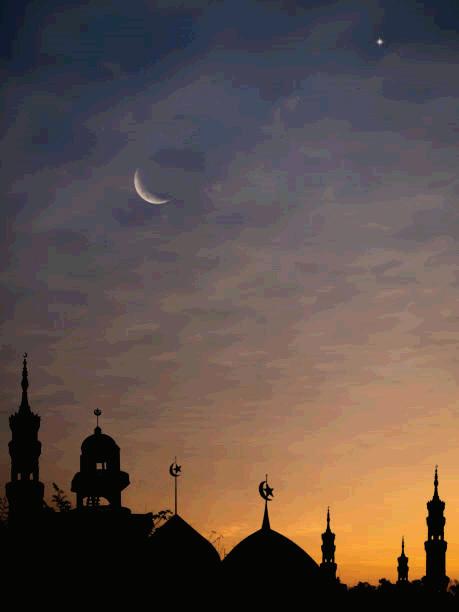

MARYAM | 33
Kids’ Spread
The historical religious importance of the land of Palestine
Did you know that the land of Palestine holds a lot of religious importance for the Abrahamic faiths –which are Judaism, Christianity and Islam.
They are called Abrahamic faiths because they originate from the Prophet Abrahamas who first introduced Monotheism – which means worshipping one God.
Prophet Abrahamas came from an area called Mesopotamia but migrated with his followers and settled in an area now called Palestine. He is regarded as the founder of Judaism. This is one of the reasons the land of Palestine holds a lot of importance to the Jewish people. The area of Palestine is also important in Judaism as they believe that it is written in the Torah that God promised this land to the Jewish people.
Palestine is also important to Christians as Prophet Jesusas was born in a city in Palestine called Bethlehem. Another city in Palestine called Jerusalem is where Jesusas was crucified. The Church of the Holy Scripture in Jerusalem is believed to be the tomb in which Jesusas was laid in after being taken off the cross. It is considered the most sacred site in Christianity.
Did you know, Palestine is actually the home of the of several prophets including Prophet Isaacas (Ishaaq), Prophet Jacobas (Yaqub), Prophet Davidas (Daud), Prophet Solomonas (Sulaiman) and Prophet Johnas (Yahya). In fact, 20 of the 26 prophets mentioned in the Holy Qur’an originate from the area of Israel and Palestine. Thus, this area is also very historical to Muslims.
Allah has named this area as the Holy Land and the Blessed Land in the Qur’an. It’s mentioned in Surah Al- Ma’idah (5:22): “O my people, enter the Holy Land which Allah has ordained for you and do not turn back, for then you will turn losers.”
Palestine is also home to Al-Aqsa Mosque, this is one of the holiest mosques in Islamic history. It was the first Qiblah that Muslims used to pray facing towards, before Allah revealed to the Holy Prophet Muhammadsaw to change the direction of the prayer to the Kaaba.
JERUSALEM BETHLEHEM
34 | MARYAM
Palestine
The Holy Prophetsaw encouraged people to visit the Al-Aqsa Mosque. He said: “No (religious) journey is to be undertaken except to (pray in) the three mosques: The Sacred Mosque (Makkah), the Aqsa Mosque (Jerusalum) and this Mosque of mine (Al-Madinah). (Al-Bukhari)
Also, the Holy Prophetsaw once had a vision in his sleep of a spiritual journey to Al-Aqsa Mosque. This was in the 11th year of his Prophethood and is detailed in the Holy Qur’an in Surah Isra.
The Prophetsaw said: “I mounted upon the Buraq (Beast), and did not dismount until I reached Bayt Al-Maqdis. There I tied it to a ring used by the prophets and then prayed two units of prayers. I was then lifted into the Heavens.” (Sahih Muslim)
Learning about the religious significance of Palestine helps us understand the diverse religious heritage of the region and promotes tolerance, respect, and peace among different communities and cultures.
MARYAM | 35
QUIZ
1. Who is considered the founder of Judaism and is associated with the migration to Palestine?
a) Prophet Jesusas
b) Prophet Mosesas
c) Prophet Abrahamas
d) Prophet Isaacas
2. According to the Torah, what promise is believed to be made by God regarding the land of Palestine?
a) Promise of eternal peace
b) Promise of prosperity
c) Promise of the Holy Land to the Jewish people
d) Promise of a great kingdom
3. In which city in Palestine was Prophet Jesusas born?
a) Jerusalem
b) Bethlehem
c) Mecca
d) Medina
4. What is the significance of the Church of the Holy Scripture in Jerusalem?
a) Birthplace of Prophet Jesusas
b) Tomb where Prophet Jesusas was laid after crucifixion
c) Site of the Last Supper
d) Oldest synagogue in the world
5. Which mosque is considered one of the holiest in Islamic history?
a) Masjid Al-Haram
b) Masjid An-Nabawi
c) Al-Aqsa Mosque
d) Masjid Quba
6. According to the Holy Qur’an, what has Allah named the area of Palestine?
a) The Enchanted Land
b) The Holy Land
c) The Promised Land
d) The Sacred Ground
36 | MARYAM
7. Which Surah in the Holy Qur’an mentions the command to enter the Holy Land?
a) Surah Al-Fatiha
b) Surah Al-Baqarah
c) Surah Al-Ma’idah
d) Surah Al-Ikhlas
8. In the 11th year of his Prophethood, the Holy Prophetsaw had a vision of a spiritual journey to which mosque in Palestine?
a) Masjid Al-Haram
b) Al-Aqsa Mosque
c) Masjid An-Nabawi
d) Masjid Quba
9. Who were some of the prophets who lived in Palestine?
a) Hazrat Muhammadsaw and Hazrat Alira
b) Hazrat Adamas and Hazrat Eve
c) Hazrat Ibrahimas, Hazrat Isaaqas, and Hazrat Daudas
d) Hazrat Musaas and Hazrat Yunusas
10. Which mosque did Muslims initially pray facing before the direction was changed to the Kaaba in Mecca?
a) Al-Aqsa Mosque
b) Prophet’s Mosque in Madinah
c) Masjid Quba in Madinah
d) Masjid al-Haram in Mecca
11. According to the Holy Prophet Muhammadsaw, what are the three sacred mosques that Muslims should visit?
a) The Blue Mosque, Hagia Sophia, and Al-Aqsa Mosque
b) The Kaaba, Al-Aqsa Mosque, and the Grand Mosque in Muscat
c) The Sacred Mosque in Makkah, Prophet’s Mosque in Madinah, and Al-Aqsa Mosque
d) Baitul Futuh, Mubarak Mosque and Fazl Mosque
MARYAM | 37
WORDSEARCH
• Find the words in the puzzle.
• Words can go in any direction.
• Words can share letters as they cross over each other.
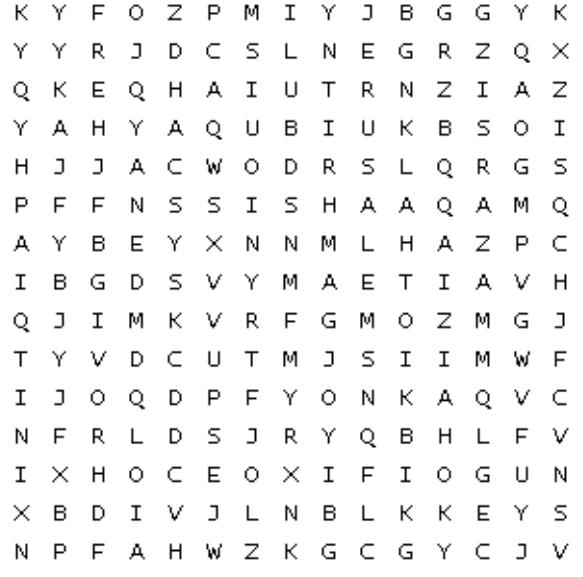 ALAQSA ISAA JERUSALEM YAHYA
DAUD ISHAAQ QIBLA YAQUB
ALAQSA ISAA JERUSALEM YAHYA
DAUD ISHAAQ QIBLA YAQUB
38 | MARYAM
IBRAHIM ISRA SULAIMAN
“Muslims must Become United”
Guidance from Hazrat Mirza Masroor Ahmad, Khalifatul Masih V (May Allah be his helper) on the current conflict in Palestine, Friday Sermon 17th November 2023
“I have been reminding everyone to pray for the people of Palestine, and I wish to do the same again today. Everyone should continue praying. Now, the cruelties are exceeding all bounds. In the name of fighting against Hamas, innocent children, women, the elderly and the sick are being killed. This so-called civilised world has abandoned all the rules and principles of war. May Allah the Almighty grant wisdom to the Muslim countries.
Approximately 72 or 73 years ago, Hazrat Musleh-eMaudra admonished that Muslims must become united. They should decide whether they wish to die off one by one and individually (if they fail to unite), or whether they want to maintain their existence as a single entity. If only these people would understand this today and become united…
…Nowadays, the Muslim nations do raise a voice, but it is a very feeble one. Though some have raised their voices, however, stronger voices have been raised by non-Muslims and their politicians and governments. May Allah the Almighty develop courage and wisdom amongst the Muslims…
…It seems the world is ushering in its destruction. May Allah the Almighty grant wisdom to those who remain after this destruction and enable them to turn towards God. In any case, we must pray a great deal in this regard. Pray that may Allah the Almighty have mercy on the world.”
MARYAM | 39
The Promised Land
(Questions and Answers prepared using the Al-Hakam article ‘Bani Isra’il: A Qur’anic Journey through history’)
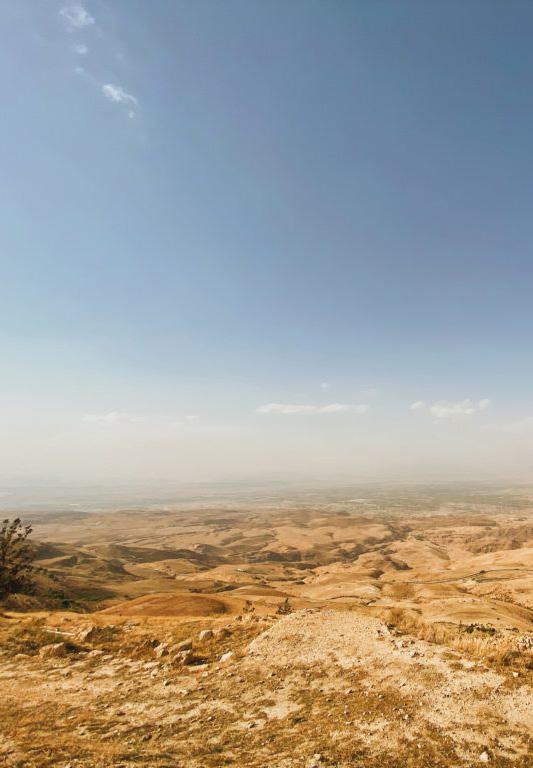
Who were Bani Isra’il?
Bani Isra’il refers to the descendants of Prophet Jacobas
Bani meaning son and Isra’il was a title bestowed upon Prophet Jacobas. This term translates to sons of Israel. Prophet Jacobas, the son of Prophet Isaacas and the grandson of Prophet Abrahamas, played a crucial role in the formation of Bani Isra’il. Notably, Prophet Jacobas had 12 sons, each of whom went on to lead separate tribes, collectively known as Bani Isra’il.
40 | MARYAM
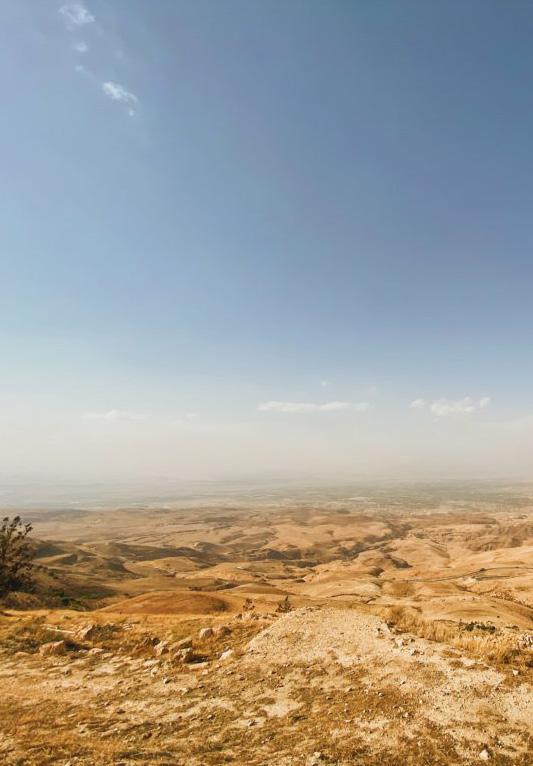
What is the Promised Land?
The story of the Promised Land starts when Abrahamas embarked on a journey from Mesopotamia, a region encompassing present-day Iraq, Syria, and Turkey, to the land of the Canaanites, the presentday Holy Land. The Bible also recounts God Almighty’s promise to Abrahamas regarding this land “Abram travelled through the land as far as the site of the great tree of Moreh at Shechem. At that time, the Canaanites were in the land. The Lord appeared to Abram and said, ‘and said, Unto thy seed will I give this land.’ So, he built an altar there to the Lord, who had appeared to him.” (Genesis 12:6-7)
Prophet Abraham’s journey to Canaan set the stage for subsequent generations, with his son Isaacas and grandson Jacobas continuing to reside in the region. Jacobas was the father of 12 sons, among them Josephas , a prominent figure extensively detailed in the Holy Qur’an.
What happened during the exodus from Egypt?
The Holy Qur’an reveals that Joseph’sas brothers harboured jealousy towards him, leading them to cast him into a well when he was quite young. A passing caravan discovered Josephas, transporting him to Egypt, where he was subsequently sold. Amidst a series
of events recounted in the Holy Qur’an, God Almighty intervened, elevating Josephas to a prestigious position within the royal court.
As the narrative unfolds, the brothers and father of Josephas eventually journeyed to Egypt, finding residence there. These 12 brothers, the progenitors of the tribes, later evolved into the 12 tribes of Israel.
After spending approximately 400 years in Egypt (Exodus 12:40), God Almighty sent Mosesas to liberate the 12 tribes of Bani Isra’il, the descendants of Jacobas, from the tyranny of Pharaoh. With divine assistance, Mosesas led the Bani Isra’il in their escape from Pharaoh, embarking on a journey towards the Promised Land according to divine command. The Holy Qur’an narrates the story of the Exodus, highlighting divine intervention during the escape from Pharaoh in Surah al-Baqarah (Ch.2: V.49-50), underscoring the miracles and guidance bestowed upon Bani Isra’il.
“And [remember the time] when We delivered you from Pharaoh’s people who afflicted you with grievous torment, slaying your sons and sparing your women; and in that there was a great trial for you from your Lord. And [remember the time] when We divided the sea for you and saved you and drowned Pharaoh’s people, while you looked on.” (Surah al-Baqarah, Ch.2: V.50-51)
MARYAM | 41
What was the covenant at Mount Sinai?
Following their escape from Pharaoh, the 12 tribes of Bani Isra’il pressed on in their journey towards the Promised Land. It was during this pivotal journey that God Almighty granted the divine commandments to Bani Isra’il, marking the establishment of a covenant between God and the people. Surah al-Baqarah (Ch.2: V.64-67) details the covenant made at Mount Sinai, outlining the responsibilities assigned to Bani Isra’il and underscoring the consequences of disobedience.
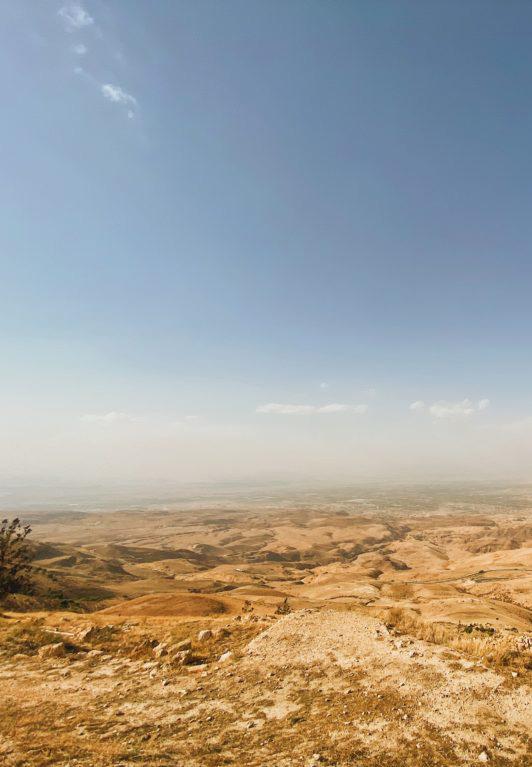
What
was the incident of the Golden Calf?
Having spent a considerable amount of time under the influence of Pharaoh, Bani Isra’il absorbed some of the religious and cultural values of Egypt. Despite their covenant with God Almighty, a strong affinity for Egyptian culture lingered among them. On their journey to the Promised Land, the influence of Egyptian practices became apparent as Bani Isra’il expressed a desire for an idol or sculpture to worship. This longing for a tangible representation of God persisted, with the people requesting an image whenever they encountered other groups.
“And We brought the children of Israel across the sea, and they came to a people who were devoted to their idols. They said, ‘O Moses, make for us a god just as they have gods.’ He said, ‘Surely, you are an ignorant people.”
(Surah al-A‘raf, Ch.7: V.139)
When Mosesas was commanded by God Almighty to engage in prayer and seclusion for 40 nights, Bani Isra’il resorted to crafting a golden calf, as detailed in Surah alBaqarah. God Almighty addresses this incident in the Holy Qur’an, “And remember the time when We made Moses a promise of forty nights; then you took the calf for worship in his absence and you were transgressors.”
(Surah al-Baqarah, Ch.2: V.52)
42 | MARYAM

Why is the journey to the Promised Land so significant to the consequences faced by Bani Isra’il?
The journey to the Promised Land was an opportunity given by God Almighty to Bani Isra’il to undergo both physical and spiritual growth. However, upon reaching the borders of the Promised Land, God Almighty commanded them to initiate an attack and conquer the Promised Land. Despite the divine promise of victory, the Bani Isra’il refused to attack, anticipating defeat. This reluctance, even in the face of God’s promise, is underscored in the Holy Qur’an. “They said, ‘O Moses, we will never enter it so long as they remain in it. Therefore, go thou and thy Lord and fight, and here we sit.” (Surah al-Ma’idah, Ch.5: V.25)
Due to their disobedience to the divine commandment, the Bani Isra’il faced consequences. God declared in the Holy Qur’an: “‘Verily, it shall be forbidden for them for forty years; in distraction shall they wander through the land. So, grieve not over the rebellious people.’”
(Surah al-Ma’idah, Ch.5: V.27)
After the passage of 40 years, during which Prophet Mosesas and Aaronas and the old generation of Bani Isra’il had passed away, a new generation emerged under the leadership of Joshua bin Noon. This courageous generation successfully conquered the Promised Land, and it was then divided among the 12 tribes as ordained.
Who was Talut?
In Chapter 2, verse 248 of the Holy Qur’an, God Almighty alludes to a king named Talut and narrates certain incidents involving Bani Isra’il. Hazrat Musleh-e-Maudra, in his commentary on this verse, identifies Talut as Gideon in the Bible. Gideon was king of Bani Isra’il 200 years after the conquest of Canaan. He played a key role in delivering the Israelites from the oppression of the Midianites.
After Talut’s reign, the first monarch of the United Kingdom of Israel was Saul. After Saul, David from the tribe of Judah is anointed as the second king. Through him all the tribes of Israel became united and organised into a powerful nation whose kingdom extended from the Euphrates to the Nile. After the reign of Davidas, the mantle of kingship passed to his son Solomonas. He was a great monarch and a wise judge. He greatly extended and developed the trade and commerce of his country.
What were the secret societies in the Kingdom of Israel?
During Solomon’sas era, secret societies quietly emerged, their plots surfacing fully in the reign of his son, when 10 tribes seized the northern part of Israel, leaving the southern territory for the remaining 2 tribes. The Holy Qur’an sheds light on this in Chapter 2, verse 103.
MARYAM | 43

What occurred in Babylon as a result of the conquest of King Nebuchadnezzar?
After the death of Solomonas, the kingdom’s division into northern and southern realms unfolded; 10 tribes in the north and two in the south. About 200 years later, the northern part fell victim to gradual decay. Approximately 150 years later, around 586 B.C., a pivotal historical event unfolds, recorded in the Holy Qur’an (Surah al-Baqarah, Ch.2: V.103). King Nebuchadnezzar’s devastating conquest led to the destruction of Jerusalem and the captivity of the Israelites in Babylon, present-day Iraq. The Five Volume Commentary offers profound insights into the manner in which the Israelites reclaimed their freedom, “In this narration, the Qur’an refers to the days when King Nebuchadnezzar brought the Jews as captives into Babylon and kept them there for a long time.
How did King Cyrus help the Israelites?
When Cyrus, King of Media and Persia, rose to power, the Israelites entered into a secret agreement with him and greatly facilitated his conquest of Babylon. In return for this service, he not only allowed them to return to their own country but also helped in the rebuilding of the Temple (Historians’ History of the World, ii. 126).” (Five Volume Commentary, Surah al-Baqarah, Ch.2: V.103) Cyrus the Great, also known as
Dhul-Qarnain in the Holy Qur’an, bestowed upon the Israelites the land of Judah and played a pivotal role in the reconstruction of the temple, echoing the grandeur of Solomon’s as time.
Divine warnings
In the verses Ch.17: V.5-8, the Holy Qur’an foretells and reflects on two divine punishments destined for the Israelites, if they continued their transgression. The first, inflicted by the Babylonian king Nebuchadnezzar, has been recounted. Hazrat Muslehe-Maudas details the second, occurring post Prophet Jesusas, as the Jews persecuted him. In the Five Volume Commentary, we read “This verse speaks of the Jews’ second relapse into iniquitous and evil ways and of the punishment which befell them in consequence. They persecuted Jesus and sought to kill him on the cross and stamp out his Movement. So, God afflicted them with a terrible punishment when in 70 A.D. the Roman forces under Titus swept the country and, amid circumstances of unparalleled horror, Jerusalem was destroyed and the Temple of Solomon was burnt down (Enc. Bib., under Jerusalem). This disaster took place when Jesus was yet living in Kashmir. It was also foretold by Moses.” (Five Volume Commentary, Surah Bani Isra’il, Ch.17:V.8)
Reference:
https://www.alhakam.org/bani-israil-a-quranicjourney-through-history/
44 | MARYAM
A VOICE FOR
PEACE
Imagine waking up to shockingly find bombs dropping from the sky, As much as we wish this is not a dream, these are the people of Palestine!
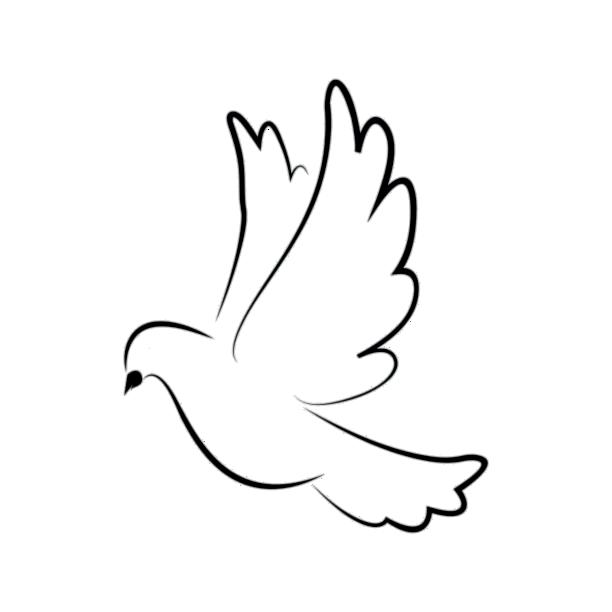
And here we are, watching this infraction, Lost lives, Demolished land, and yet still no action
Now our lives with no more joy, And lots with no lives at all, There will be nothing left to destroy, And humanity will rapidly fall
Committing crimes and bombing with impunity, Completely separating their community
Are we to go home, Use the light, eat fresh food, and then sleep tight
Whilst their homes are destroyed, they starve for days, still trying with all their might, and still not able to escape
One who kills another, it will be like they killed all of mankind, and one who saves another, it will be like they saved all of mankind
Why set our world ablaze
This will never lead to better days
This is not any type of religious fight, This is just a basic human right
So pray for peace, And pray for love, Pray to him up above, Pray for no lives to get further darkened, And then Allah the almighty shall make it happen
 By Sabeeka Maqbool Rana
By Sabeeka Maqbool Rana
MARYAM | 45
Righteous
‘ THE SHALL THE LAND’ Inherit
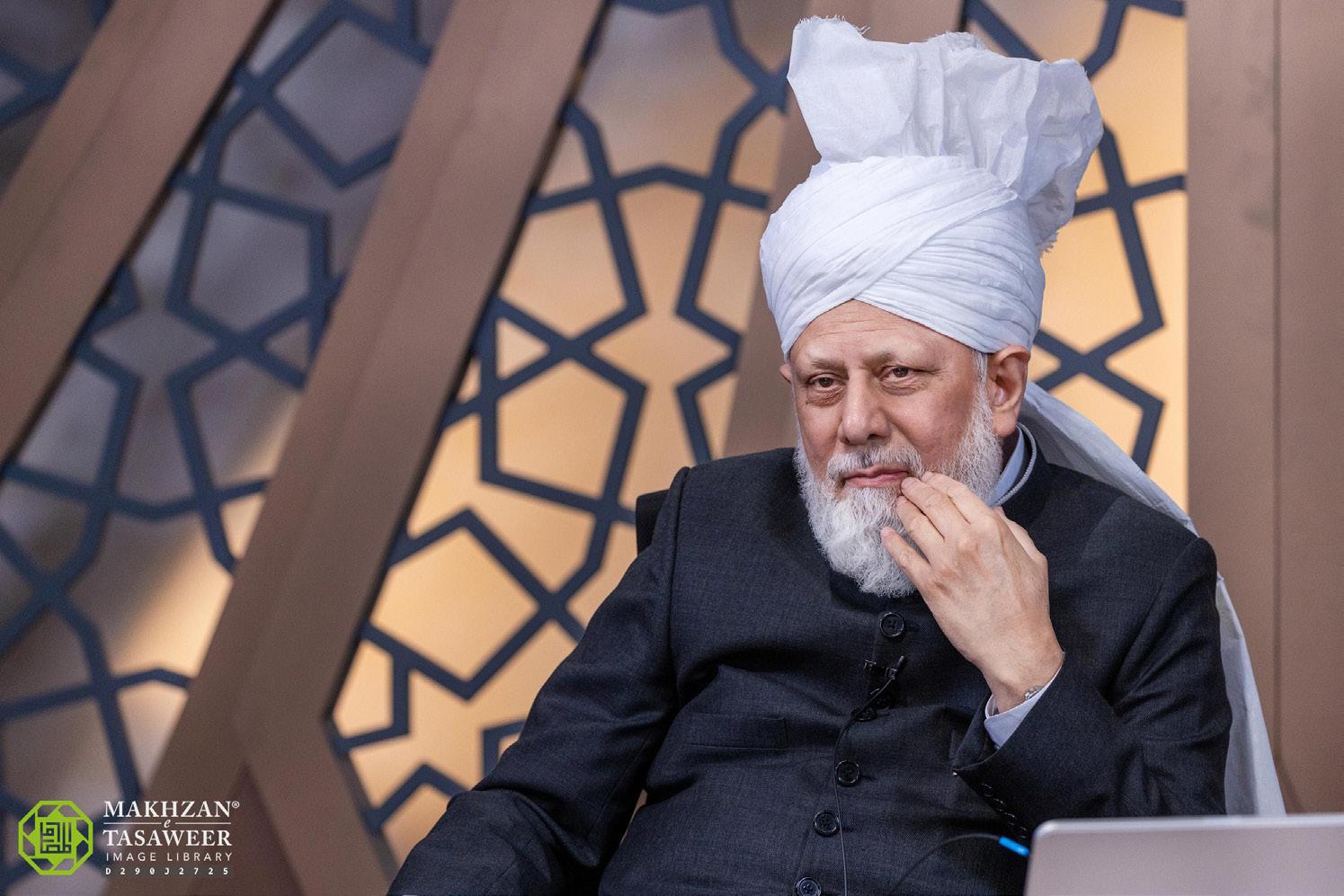
46 | MARYAM
A Waqifa-e-Nau from Belgium, Saira Ahmad Sahiba, during a virtual Mulaqat with Hazrat Mirza Masroor Ahmad, Khalifatul Masih VMay Allah be his helper, enquired about the fulfilment of the Holy Qur’an’s promise that the Holy Land would be granted to the righteous people. She asked about the timeline for when this Land would be given to the righteous and when true peace would be established, especially considering the current oppression faced by the people of Palestine.
Hazooraba said:
“[…] If you read the first Ruku of Surah Bani Isra’il, it is also written about this therein, and the Tafsir explains the matter. Allah Almighty had said that the Israelites would be given the Land twice; the first time they would be granted it, then they would engage in frivolous acts, rebel, deviate from Allah’s commands, and commit oppression, and consequently, they would lose that Sacred Land. […] Hence, the Land was again taken from them and came under Muslim control. Then, once again, it was returned to them.
“This means that among the Muslims, too, there will be those ‘righteous servants of Allah’
[‘ibadi as-salihun (Surah al-Anbiya, Ch.21: V. 106)].
Therefore, we should first strive to become such servants of Allah who are regarded as righteous in His sight. We should not deceive ourselves into thinking, ‘We follow righteousness, we are very virtuous, and since we recite La ilaha illAllah Muhammadur Rasulullah, it is our right to receive everything that Allah has promised.’ Allah’s promises to us are conditional upon our good deeds, fulfilling the rights of Allah, fulfilling the rights of His creation, and striving to follow His commandments. In this age, Allah Almighty sent the Promised Messiahas for this very purpose; to present the teachings of Islam brought by the Holy Prophetsaw - which Muslims have forgotten and are not following correctly - in their true light and to remind them to act upon the true teachings of Islam. For this purpose, Allah Almighty established a Community through the Promised Messiahas.
“The prophecy of the coming of the Messiah and Mahdi was also declared by Allah Almighty in the Holy Qur’an, in Surah al-Jumu‘ah, and through the Holy Prophetsaw in the Hadith. Now, if the Israelis have once again gained control and are committing oppression, then it is Allah’s promise that they will lose this rule, but when this will happen and when those ibadallah as-salihin will arise, only Allah knows best.
MARYAM | 47
“When they arise among us, that Sacred Land will be given to us. The righteous servants are those who pray and perform good deeds; the Land will not be acquired through swords. The Promised Messiahas after his advent, ended such fighting and warfare, in accordance with the prophecy and the Hadith of the Holy Prophetsaw. This means that we should focus more on prayers; if we pray, perform good deeds, fulfil the rights of Allah, and fulfil the rights of His creation, then we will also be saved from these oppressors. So, the Palestinians, the Arabs, the Muslims, and all of us need to reflect on how to become righteous servants. Are we to become so by following the Imam of the Age, or at the very least, should we [i.e., the Muslims] not reach a state where our deeds become pleasing to Allah?
“Then we will regain the Sacred Land, but it is evident that the Israelis, who are committing oppression, will eventually lose this Land, when this will happen, only Allah knows best, and then the Land will be given to the righteous people, who will be those fulfilling the rights of Allah. In this era, I believe, the majority of such people will be those who have accepted the Promised Messiahas.
“The oppression that is happening, and the oppression that the Israelis continue to inflict on the Palestinians, will
lead to their downfall. I have already conveyed this message to them through various means on several occasions. This is also written in the Psalms, and the same has also been mentioned in Surah al-Anbiya.
“If you want to read the interpretation, and you can read Urdu, then read it in Tafsir-eKabir; it is mentioned in both Surah Anbiya and there are also a couple of verses in the first Ruku of Surah Bani Isra’il. […] In this way, you will get a detailed understanding and you will also find references to the Bible, about what it said to the Israelites. […] Coincidentally, both pericopes have been excellently interpreted by Hazrat Musleh-e-Maudra.”
Subsequently, Hazooraba advised that Lajna Imaillah, as well as the Jama’at as a whole, should extract the exegesis of these sections – which is already available in both English and Urdu and distribute it among people. Hazooraba said, this should be done everywhere, as according to the current circumstances, it is highly contemporary.
Waaqifaat-e-Nau Belgium Virtual Mulaqat with Hazrat Mirza Masroor Ahmad, Khalifatul Masih Vaba, Sunday 19 November 2023, https://www.alhakam.org/belgium waqifaat-meet Hazoor/
48 | MARYAM
CHANGING FACE OF PALESTINE
Shaista Giny
Since the signing of the Balfour declaration in 1917, maps of Palestine have continued to changed dramatically over the last century. Much of historical Palestine was annexed in the Nakba of 1948, with the creation of the new state of Israel. The current area of Palestine is 6020km2 comprising Gaza and the West bank, with Israel approximately 20,770km2. To date, there is ongoing occupation with the building of Israeli settlements and a separation wall on occupied Palestinian territories.
1946 – 1917 – Pre-British mandate to Jewish Immigration
As part of the Balfour declaration during WW1, Britain pledged a national home for Jewish people in Palestine. Britain conquered Palestine from the Ottoman-Turks in 1917. Thousands of Jewish immigrants arrived in Palestine until 1946.
HAIFA
JAFFA
JERUSALEM
JAFFA
JERUSALEM
MARYAM | 49
JEWISH IMMIGRATION
1947 – UN partition plan (not implemented)
CONCEPTUAL MAP
Voted for (33)
Australia
Belgium
Bolivia
Brazil
Byelorussian SSR
Canada
Costa Rica
Czechoslovakia
Denmark
Dominican Republic
Ecuador
France
Guatemala
Haiti
Iceland
Liberia
Luxemburg
Voted for (13)
Afghanistan
Cuba
ARAB STATE - 45%
JEWISH STATE - 55%
JERUSALEM UNDER INTERNATIONAL CONTROL
After WW2, the UN proposed a plan to grant 55% of Palestine as a Jewish state, however this plan was not implemented.
1948 – Nakba: Palestinians expelled
Egypt
Greece
India
Iran
Iraq
Voted for (10)
Argentina
Chile
China
Colombia
El Salvador
Netherlands
New Zealand
Nicaragua
Norway
Panama
Paraguay
Peru
Philippines
Poland
Sweden
Ukrainian SSR
Union of South
Africa
US
USSR
Uruguay
Venezuela
Lebanon
Pakistan
Saudi Arabia
Syria
Turkey
Yemen
Ethiopia
Honduras
Mexico
United Kingdom
Yugoslavia
In 1948, over 750000 Palestinians were forcibly expelled in an exodus known as the “Nakba,” by military forces, with approximately 78% of Palestine occupied and the creation of Israel.
50 | MARYAM
1967 – Israeli occupation of Gaza and the West Bank
During the 1967 war, 300,000 Palestinians were expelled from their homes, and all of historic Palestine was occupied.
PALESTINIAN (UNDER ISRAELI OCCUPATION ISRAELI
EGYPTIAN AND SYRIAN LAND OCCUPIED BY ISRAEL
1995-1993 Oslo Accords
In 1993, the Oslo Accords were signed by the then Palestinian leader Yasser Arafat and Israeli Prime Minister Yitzhak Rabin. The aim was to establish peace over 5 years. A subsequent agreement in 1995 divided the West bank into 3 parts, with Israel continuing to control the majority of the West Bank.
Present day and Occupied Territories
There was gradual breakdown of the Oslo Accords with rapid development of Israeli settlements in the West Bank and East Jerusalem. The population of settlers is currently ~700,000 as of September 2023. These settlements are illegal under international law.
REFERENCES:
McCarthy The population of Palestine
20,770KM2
GAZA
WEST BANK JERUSALEM
EGYPT’S SINAI PENINSULA
SYRIA’S GOLAN HEIGHTS
WEST BANK AND EAST JERUSALEM
GAZA ISRAEL
365KM2 5,655KM2
MARYAM | 51












 By Hibbat Mirza
By Hibbat Mirza










































 ALAQSA ISAA JERUSALEM YAHYA
DAUD ISHAAQ QIBLA YAQUB
ALAQSA ISAA JERUSALEM YAHYA
DAUD ISHAAQ QIBLA YAQUB




 By Sabeeka Maqbool Rana
By Sabeeka Maqbool Rana
